My Favorite Comic Books of 2023
The Sequential Artiest of the Year!
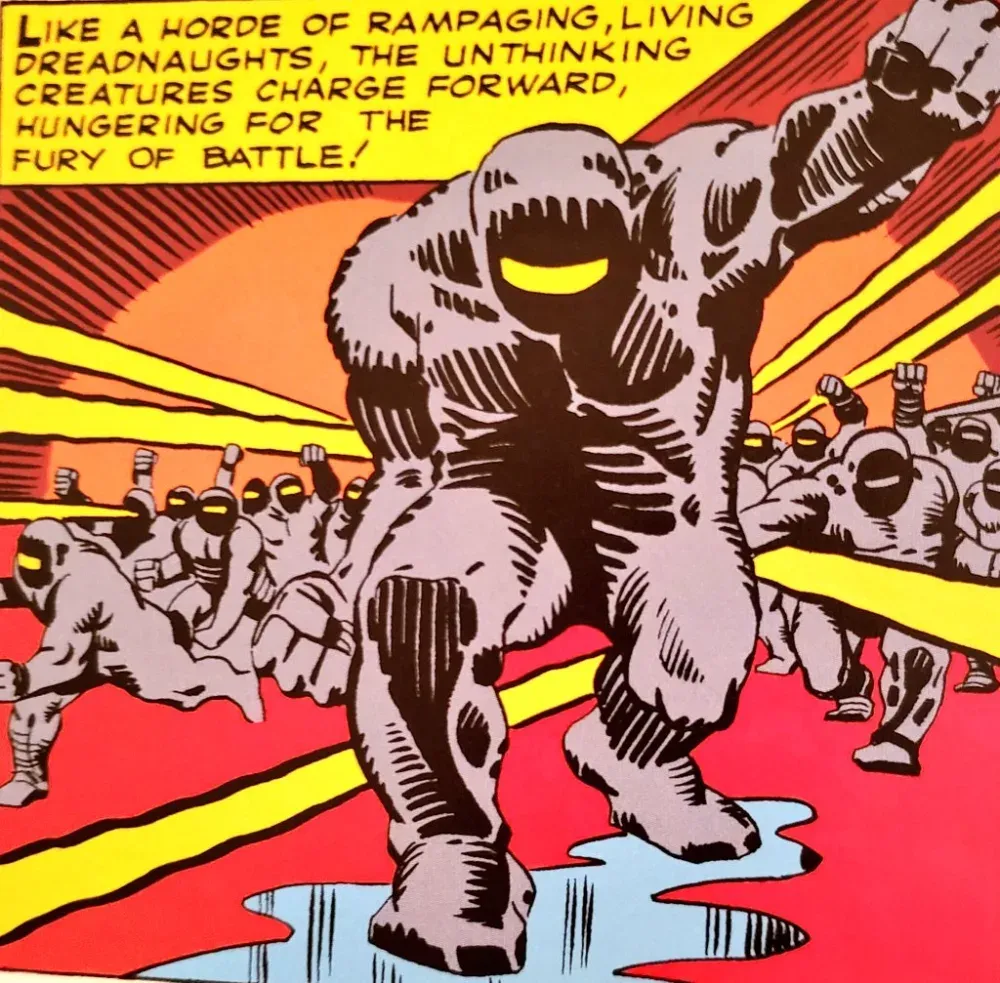
Ah, comics…
Did you know, on the island of Sulawesi in Indonesia, there’s a cave painting of a pig hunt that has been dated to be at least 43,900 years old? Did you also know that this cave painting is considered to be the oldest known depiction of storytelling, as well as the earliest instance of figurative art, in human history?
Probably not, but trust me… True story.
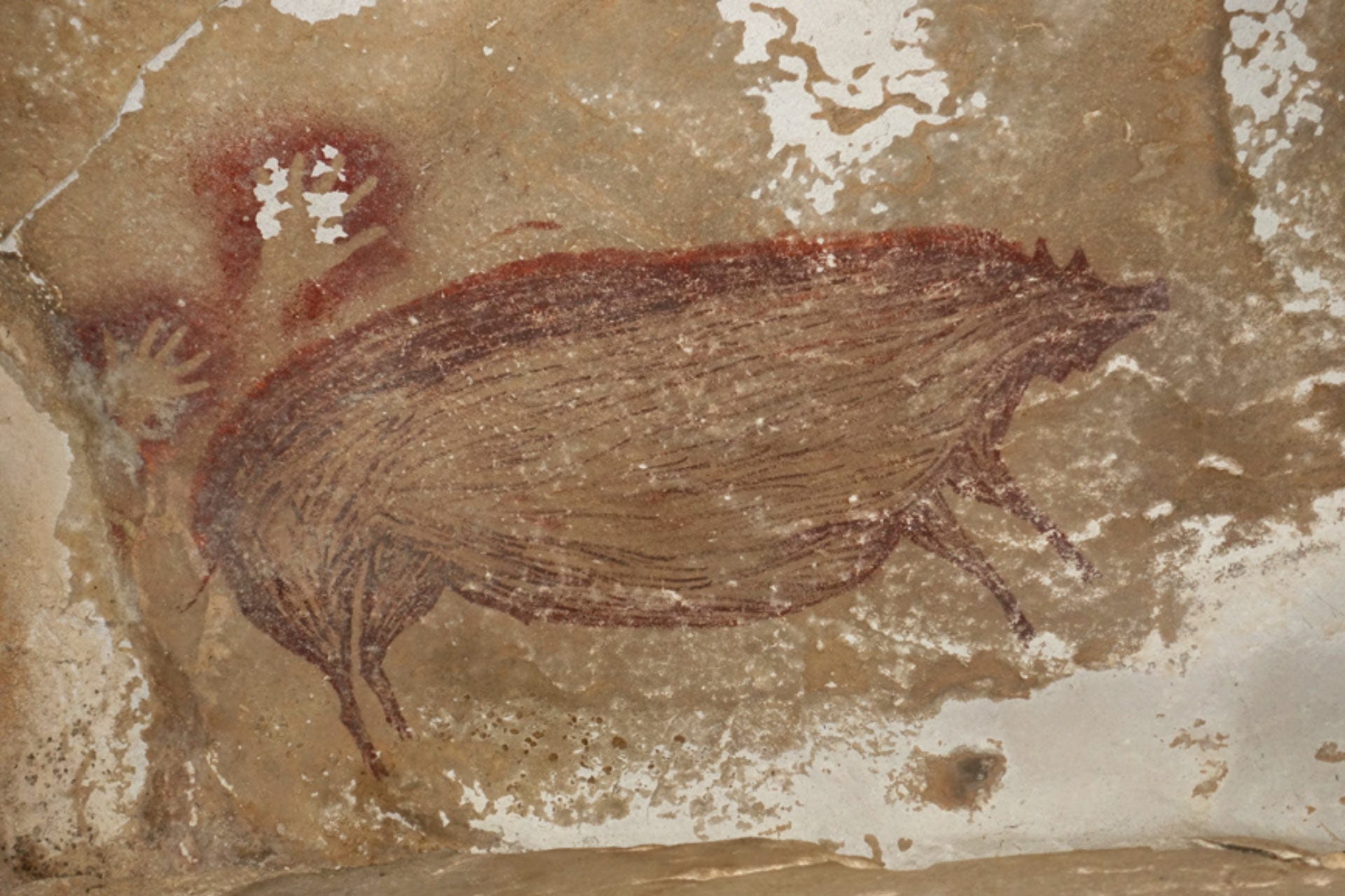
That’s a big pig too. It must’ve been one hell of a feast that night. No wonder they slapped its likeness up on the wall of their home. They probably told the story over and over again.
(Indonesia, 43899 years ago. Two cavemen idly stroll through the cave one night, they pause and admire a painting on the cave wall.)
Caveman #1: “Hey… ‘Member when Grok got that pig?”
Caveman #2: “Fuck yeah, dude. That was epic.”
(They nod and continue to admire the drawing.)
What this also means is that, even during the earliest versions of human civilization that made up the Upper Paleolithic, as we huddled in our caves, barking and grunting and pooping on the floor, hunting Wooly Mammoths and massive Bison in our smelly, fur-clad packs, ever-watchful for the stalking menace of saber-toothed tigers, giggling packs of opportunistic giant hyenas, the monstrous nightmare that was giant bears, or worst of all, the vicious beak of the giant chicken… we were also making comics, not just to tell our stories either, but because they’re awesome and fun. This shows that, whether under eco-friendly LED bulbs, or by the flickering light of a dung-fire…
We’ve always loved Comic Book Day (every Wednesday).
Now that 2023, the year of the Great Continued Decline of the American Empire, has lurched to its ignoble end, I have put together my annual list of preferred Pop Culture ephemera in comic book form.
So, without further ado, and in no particular order…

KILL YOUR DARLINGS

Eight-year-old Rose spends all of her time playing pretend in a magical land of adventure all of her own creation. To her, this world is as real as the real world, and her many fluffy friends that live there are just as real too. But this also means that the terrible evil that lurks within this world is also all too real. One terrible night, the line between Rose’s world and the real world blur, unleashing an evil that will irrevocably ruin Rose’s young life, and years later, the legacy of that night will pull Rose back into a gruesome and mysterious saga…
This is a new book, there’s only been three issues published so far, so I’m not entirely sure where it’s heading, or if it will pull it off, but I’m loving what I’ve seen so far. Part horror story, part Narnia fantasy, Rose is somehow connected to some witch hunts from centuries ago, where the witches possessed real magic, and I assume that same magic is now manifesting itself in her through her creation of a fantasy realm filled with cute fantasy animal-people that she rules. But then, like I said, something very bad and very bloody happens, in both the fantasy world and the real world.
It's a very intriguing setup, with great dialogue, rendered in an art style and colors that perfectly fit the tone, in a book that at least so far has managed to walk the line between bloody horror and fantasy adventure.
I’m excited to see more.
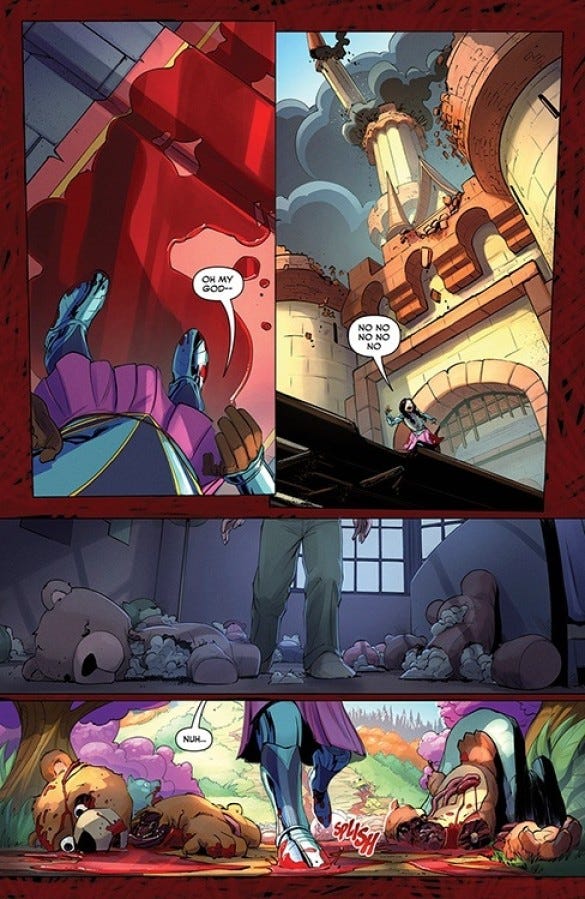
Ultimate Invasion

Twenty-some years ago, Marvel created the Ultimate Universe.
A side universe reboot of the Marvel characters, it was intended to be a jumping-on point for new readers, as familiar characters were started over from scratch, all in a “modern” setting, and all without intruding on the continuing stories of the actual Marvel characters. It was basically Marvel having their cake and eating it too, and it was an immensely popular initiative, one that was hugely influential on the films of the MCU, both in costume designs and the way that they approached the characters.
Then, a few years ago, the Ultimate Universe was wiped out, along with all of the myriad variations of the Marvel Universe, in the big Multiversal Event known as The Secret Wars. In the end, the only survivors of the Ultimate Universe were Miles Morales and a man known as The Maker.
The Maker is a version of Reed Richards from the Fantastic Four who went bad. Reed Richards is one of the smartest men to ever live, so The Maker is very dangerous. He’s caused trouble in the main Marvel Universe since The Secret Wars, which eventually landed him in a special cell designed to hold someone just like him, forever.
Ultimate Invasion is the story of The Maker escaping, and realizing the futility of fighting the long-established heroes of the Marvel Universe, he transports himself to a different Earth in a different universe, and quickly takes it over. He accomplishes this by making sure that the superheroes who could’ve given him any trouble never existed at all, but in the end, all he does is create new heroes…
I’m not a big fan of Bryan Hitch’s art, but I love Jonathan Hickman’s writing, so that, plus my well-documented love of alternate universes, means I’m a shoe-in for this, so feel free to take this recommendation with a grain of salt, because this book, and the books that will spin out of this set-up are all totally right up my alley.
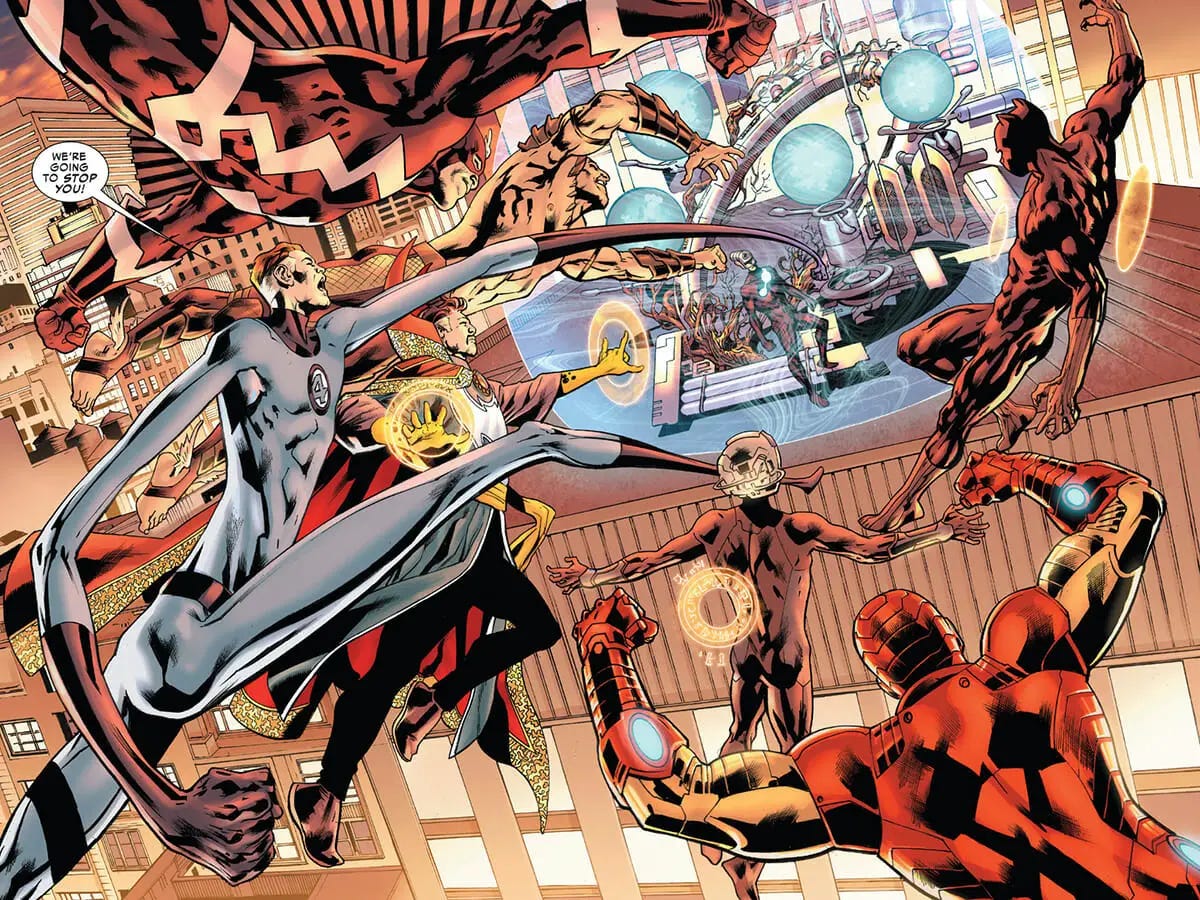
3W3M
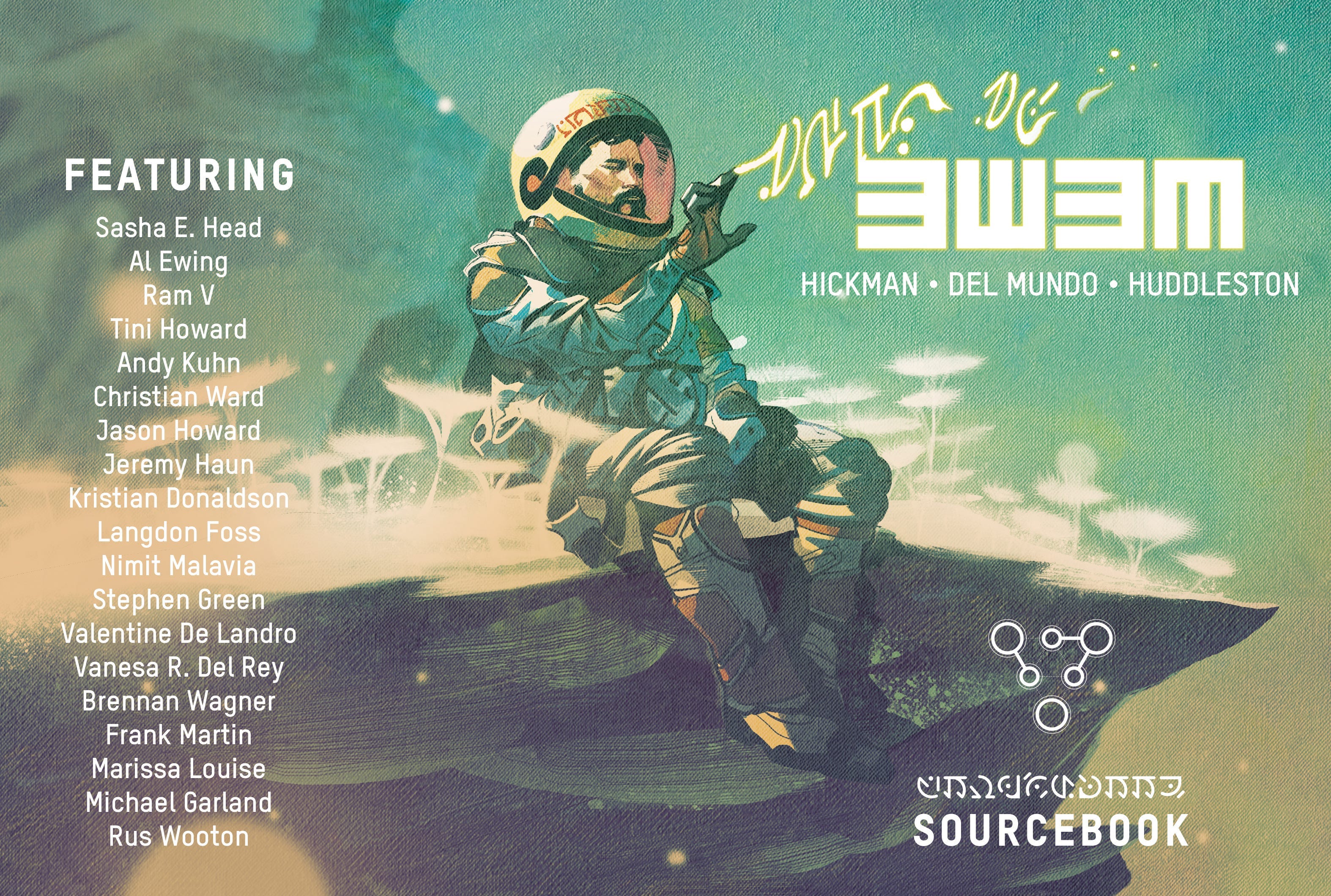
As I just said, I love Jonathan Hickman’s stuff, and 3W3M—meaning Three Worlds, Three Moons—is his substack. It is a brand-new world of comics stories being created from the ground up, by a wide range of talent, and watching this process as it happens is part the experience of subscribing to the Substack.
The idea is that there are three worlds, with a total of three moons between them. This is our setting, a place of ancient traditions and secretive institutions, a place where technology and science rules all, and magic is a myth. That is, until the time of the change, an endless cycle of thousands of years, always slowly turning and coming back around again, bringing with it a time where things that were once thought to be true begin to lose their strength, and the things that were once thought to be just a legend begin to become all too real.
The various comics and supplemental material they put out, both digitally and in physical form, all tell separate stories, with separate characters of separate concerns, on separate worlds and moons, all painting a picture of the approaching convergence of a potentially apocalyptic change. They are all pieces of a larger puzzle that is slowly revealing the dawn of new reality.
It’s amazingly entertaining stuff.
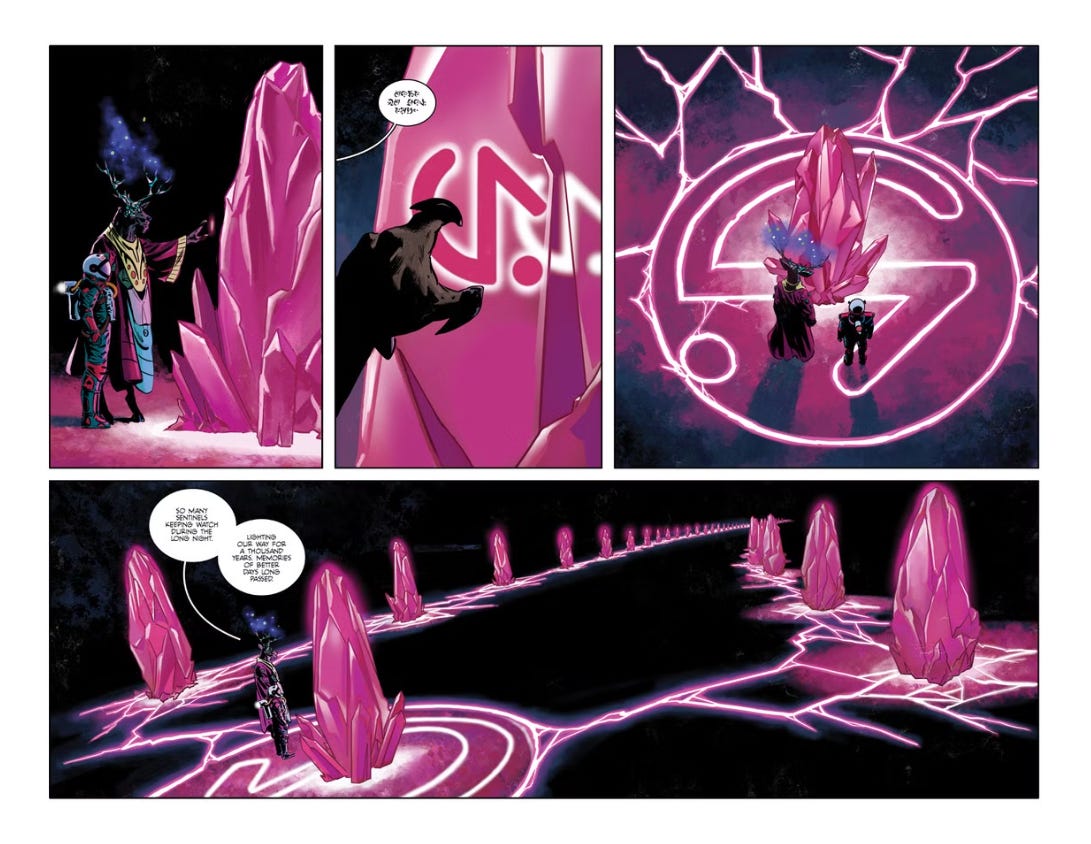
Sins of Sinister
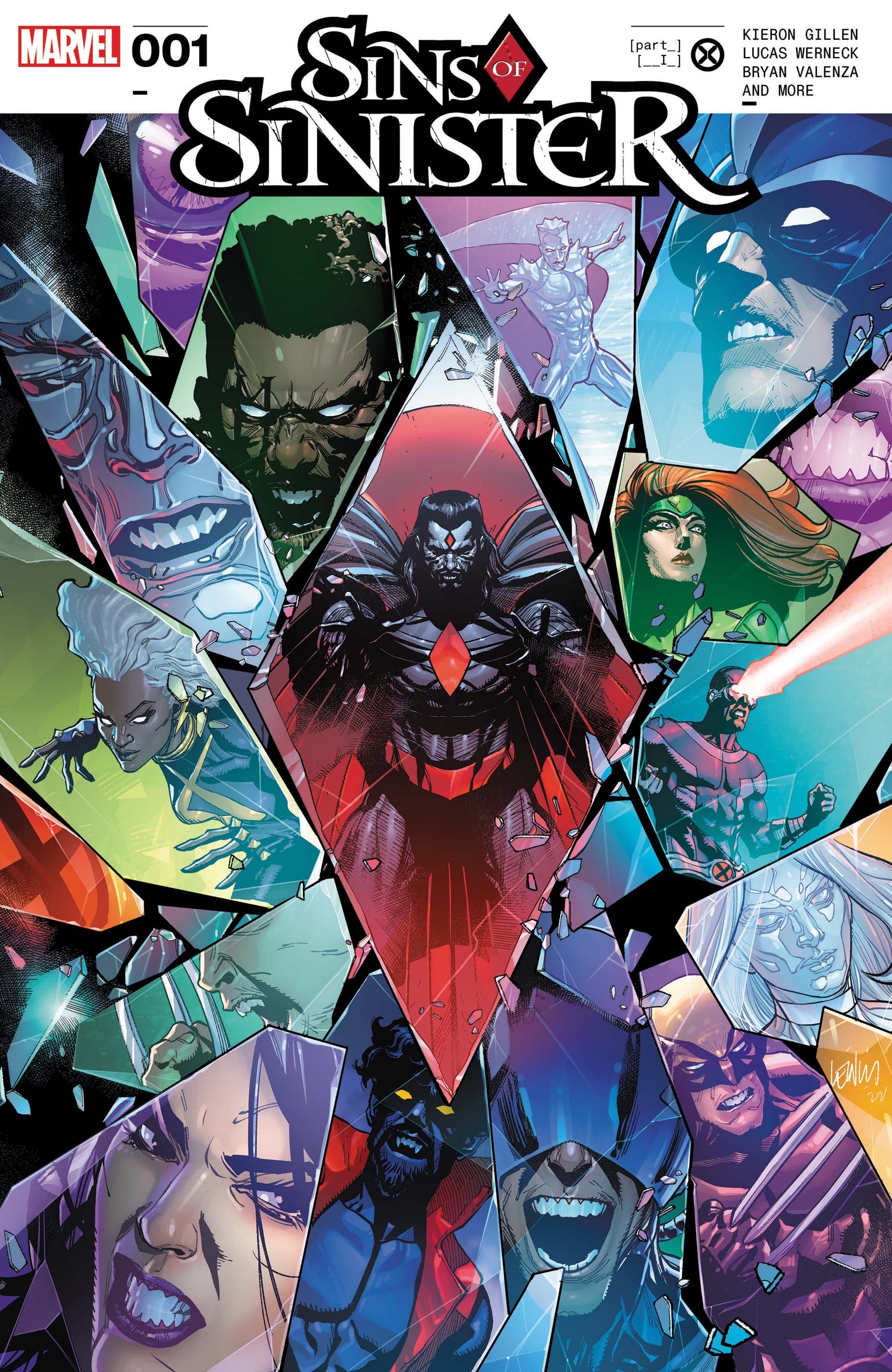
Four comics so far, and three of them are either written by Jonathan Hickman, or spun out of one of his set ups.
I guess I’m a fan.
A few years back, Hickman led a soft reboot of the many X-Men titles. Long a franchise that was built on an obvious metaphor for the evils of racial/gender/sexual identity or preference bigotry, the mutants of Marvel, with their strange abilities that manifest with the onset of puberty, are hated and feared by humanity, and yet, despite this, the X-Men continue to fight for a better future. Over the years, the X-men have faced many enemies with bigoted and genocidal agendas, and they have witnessed so many potential futures, most of which showed a world where mutants are killed or enslaved simply because of their birth.
Hickman’s relaunch began with the House of X/Powers of X mini-series, which started with longtime mutant ally Moira MacTaggert revealing herself as a mutant. Her power is that when she dies, she is born again as a baby in a new timeline, wiping out the old one, and is able to re-live her life, to make new choices, and to choose new paths, all with the memories and knowledge she accumulated in her past lives. She finally revealed herself to Professor Xavier, because the one thing that those lives have taught her over and over is that the X-men always lose, no matter what she or anyone else does, they lose, and mutantkind is always wiped out.
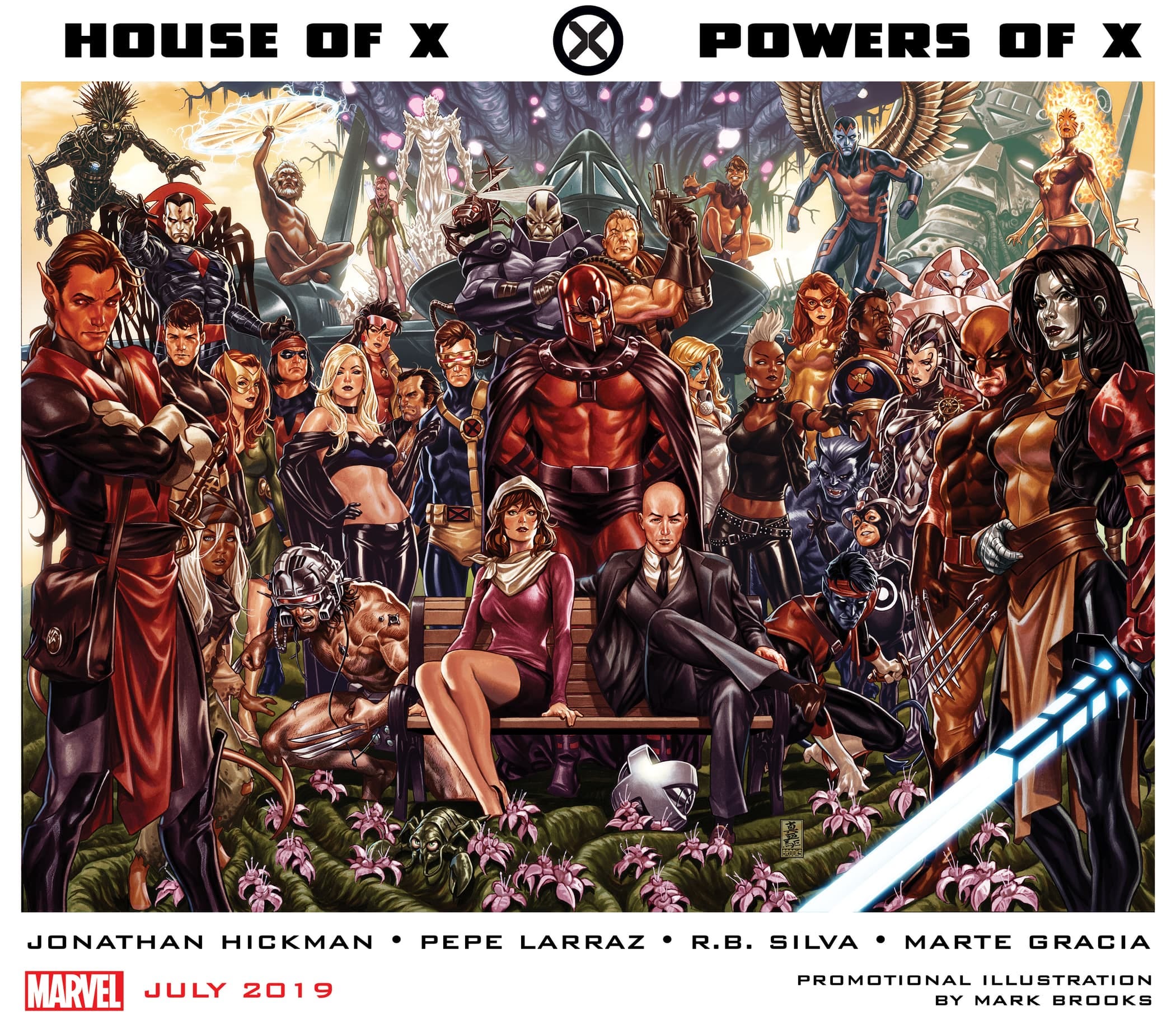
So this time, Moira, Professor X, and Magneto establish a colony on the sentient island of Krakoa—the island itself a mutant, with a history with the X-Men stretching back decades—and claim it as the sovereign nation of mutantkind, gifting all mutants with citizenship and granting them amnesty for any past crimes. Along with a few clever tricks, some desirable exports, and protected both by powerful mutants and an obstinate attitude, Krakoa quickly becomes a new world power. This really upsets the human governments of the world, who have been trying ever since to undermine and destroy these uppity mutants, and not just due to bigotry either, but also because the mutants have figured out, through the clever application of multiple mutant powers, how to reincarnate themselves whenever they die, making themselves effectively immortal.
However, one of the unfortunate downsides of gifting all mutants with amnesty and citizenship is a man named Mr. Sinister, who is the center of this mini-series, the Sins of Sinister. It is a multi-title event written by Kieron Gillen, Al Ewing, and Si Spurrier, with art by Lucas Werneck, Paco Medina, Patch Zircher, and Alessandro Vitt.
Well-known for his dramatic flair, as well as his incredible capes, Mr. Sinister is a genius geneticist and a greedy opportunist, and at some point, he has corrupted the reincarnation protocols, because he’s a sneaky dick like that, inserting engineered genes into the mix which place everyone who has been reincarnated under his control. He has also cloned Moira, and uses her clones as emergency timeline resets, killing one each time his efforts to take over fail, allowing him the opportunity to start over and try again, all with everyone once again unaware of his efforts.
Eventually though, others do become aware, and Sinister soon finds that his Moira clones have been stolen. Trapped in an ever-worsening timeline of his own creation, and following his efforts to recover the clones so that he can reset the timeline, the story takes us thousands of years into a dark and dystopian far-flung future, a galaxy corrupted by out-of-control genetic engineering, ruined by warring factions of powerful chimeras grown in labs out of the spliced genetics of long dead Krakoan mutants, and the end of everything is imminent. It’s a desperate race against time to save all Creation, with Sinister, a truly terrible but also really funny asshole at the center.
Bringing a myriad of fresh and exciting takes to many familiar characters, not to mention new considerations of not just mutant powers, but the place of mutants in the Marvel Universe, all while rooting it firmly in the core ideas of the franchise, the Krakoa Era, as it’s being called, is the best new status quo to hit the books in decades. It’s also an era that is coming to an end now, and I’m sad to see it go, but then… that’s just the way of long-form serial comics in general, old ways end, new things begin.
So, while perhaps not the most “new reader” friendly book, The Sins of Sinister is a good example of the new life that the Krakoa Era injected into the old gray mare that is the X-books, and I loved it.

The Alternates
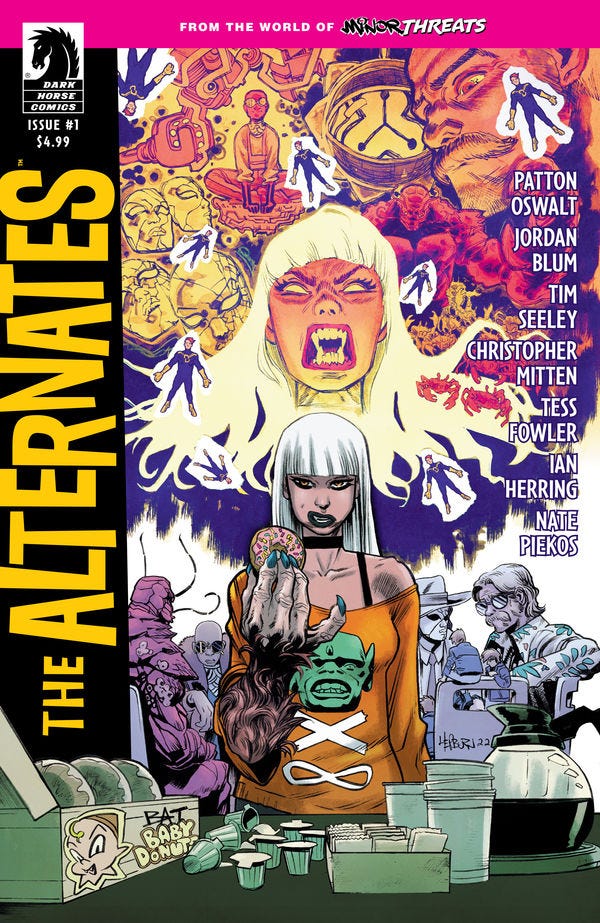
The Alternates is the sister book of the comic Minor Threats. Both books are the brainchild of Jordan Blum and Patton Oswalt, with co-writing on the Alternates from Tim Seeley, and art by Christopher Mitten, Tess Fowler, and Scott Hepburn.
If Minor Threats was a love letter to D-tier theme supervillains, The Alternates is a love letter to the age of Veritgo comics, and how, back in the 80s, it took forgotten characters and reinvented, deconstructed, and re-approached them for a new audience, which were mostly made up of 80’s goth kids.
Mary the Multi-Monster, The Tripper, Crab Louie, Kid Curious, and Persona… Once upon a time, they were a gaggle of silly and half-forgotten loser superheroes in a team known as The Alternates. A few years ago (in the book), they seemingly sacrificed themselves in order to stop an invasion from another dimension, but in actuality they were transported to a different reality called The Ledge, where they all lived much richer and much more complex lives.
They became arty as fuck, basically.
Five years later, they have all returned to the world they originally came from, but they’re now more of a support group than they are a superhero team, as they struggle to fit back into their old lives within a flatter, more 2-D superhero world. They’re like junkies jonesing for their lost lives of depth and insight.
But then, the rainbow-hued pieces of that alternate reality start showing up on the street as a dangerous new drug, and the Alternates must decide not only how to stop it from tearing their world apart, but if they even want to…
Full of humor and in-jokes and surprisingly human moments, much like Minor Threats, The Alternates is a self-contained mini-series that requires no previous knowledge, and tells a complete story, but a person who is more well-versed in the tropes and cliches of superhero comics in general, and specifically the type of books that DC Vertigo published back in the day, will have a much fuller experience when they read this one.
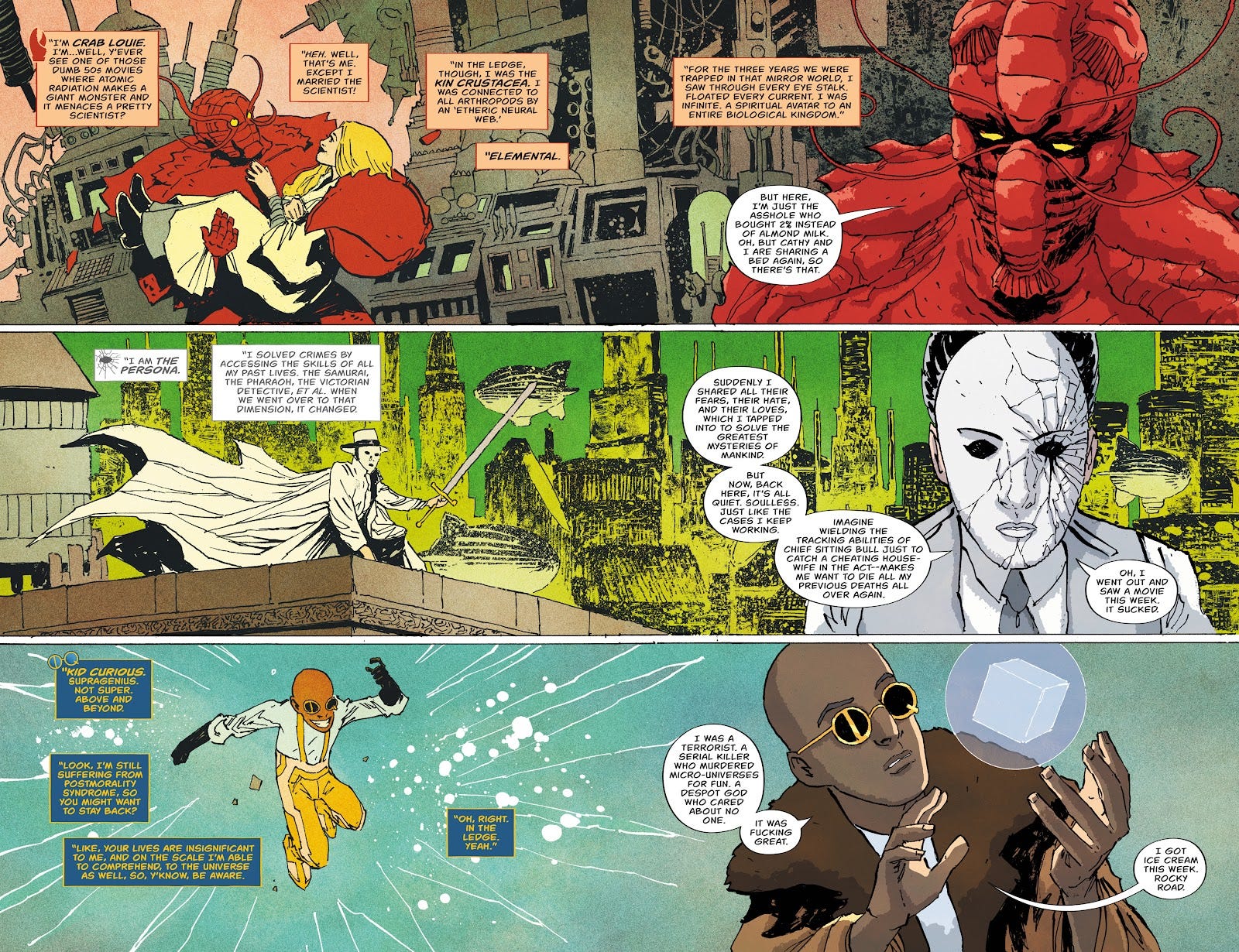
20th Century Men

20th Century Men is a story of the secret history of the Cold War, another particular type of story that I love. The idea of an arm’s race between the Russia and the U.S. to create super soldiers is fantastically fertile narrative ground for me, especially when these efforts all go bad.
Which is what happens here.
Or did happen, as this book takes place at the end of the 20th century, telling the legacy of all of those buried secrets, creatures of black science, and lab-grown dark gods, as an “iron-suited” Soviet hero, a star-spangled superpowered war hero of an American president, an insane cyborg soldier, and an Afghan woman trying to build a better life for her people out of the rubble of a country caught between warring nations, all find themselves on the path to a seemingly inevitable WWIII.
This is the type of book that could almost be considered an alternate dimension story of the more well-known Big Two superhero comic book universes. When it comes to Marvel comics, these stories are known as What if, and for DC Comics, they’re called Elseworld Tales. 20th Century Men obviously isn’t one of those books, it’s published by Image, but it features a lot of characters who could be considered to be dark echoes of so of the familiar concepts from those companies.
Written by Deniz Camp, with art by S. Morian, the book uses that familiarity, and mixes it with real world history and politics, all to create an exciting tale where fiction and reality overlap in a scathing indictment of American foreign policy and Cold War politics and the resulting massive carnage.
Loved it.
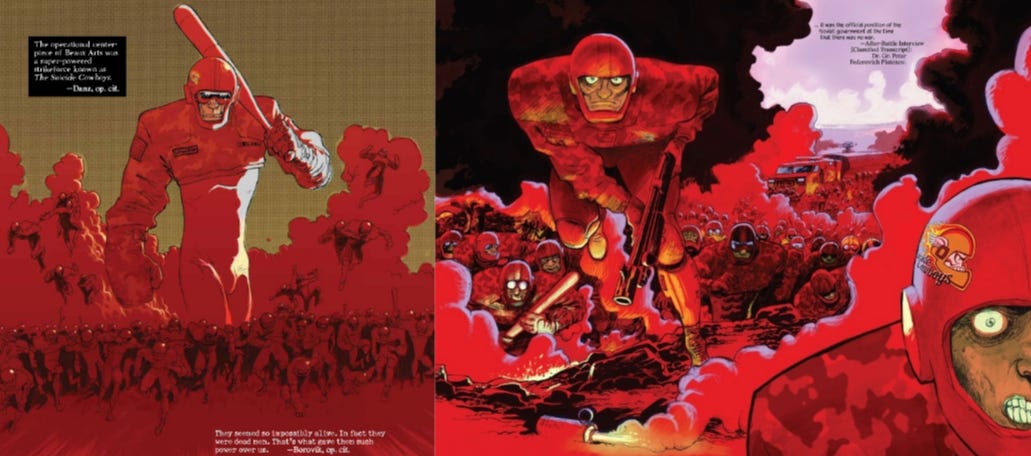
w0rldtr33
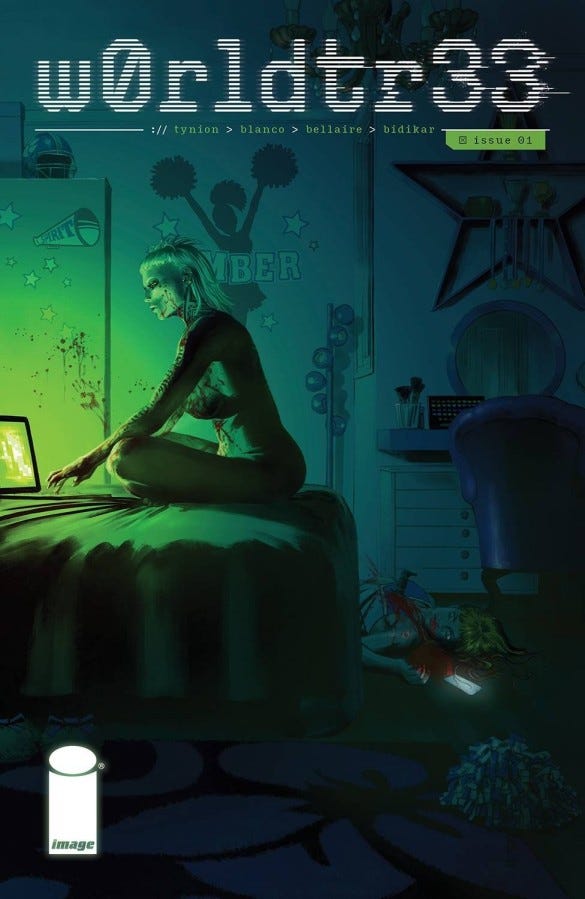
W0rldtr33 (Worldtree) is spelled this way because it centers on “hackers,” but it’s telling a story of people who once delved too deep into something they thought they understood, and found something dark waiting there for them. After some effort, they managed to bury the thing, to lock it safely away, or so they thought, but now, years later, they are realizing that they failed.
Involving a very, very naked and very, very ruthless, blood-spattered and mulleted killer, a secret message board called W0RLDTR33 in the deep dark layers beneath the Internet, a dark and violent entity from another world that drives anyone exposed to it to commit brutal acts of violence, and a group of old friends pulled out of their lives and plunged back into the mistakes of their youth, this book is maybe the best horror comic of the year.
James Tynion IV is kind of the big name at the forefront of this new crop of horror comics, adding this to his other horror titles like Something is Killing the Children, The Deviant, and The Nice House on the Lake. Fernando Blanco is the artist, bringing an Invisible’s era Phil Jimenez feel to this Poltergeist/X-files/Fringe/Stephen King’s IT-influenced book. Together, they are telling a timely story about the dangers of online radicalization, and the fear of your young loved ones, alone in their rooms on their computers, being exposed to something that is truly terrible.
It is a shocking and terrifying book, and much like with Something is Killing the Children and The Nice House on the Lake, I would love to see a good prestige TV show made out of it.
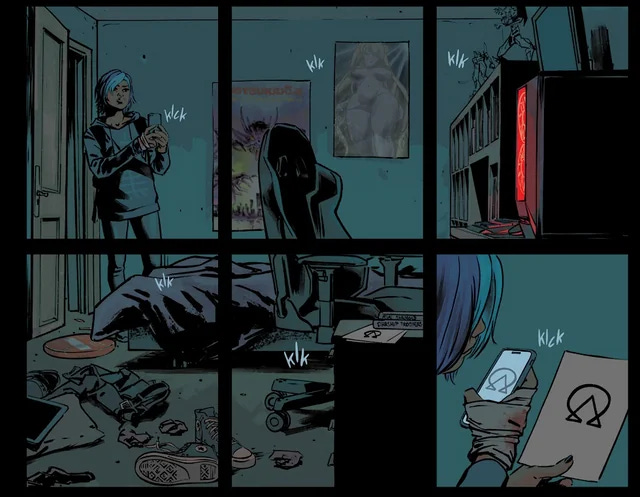
What’s The Furthest Place From Here?
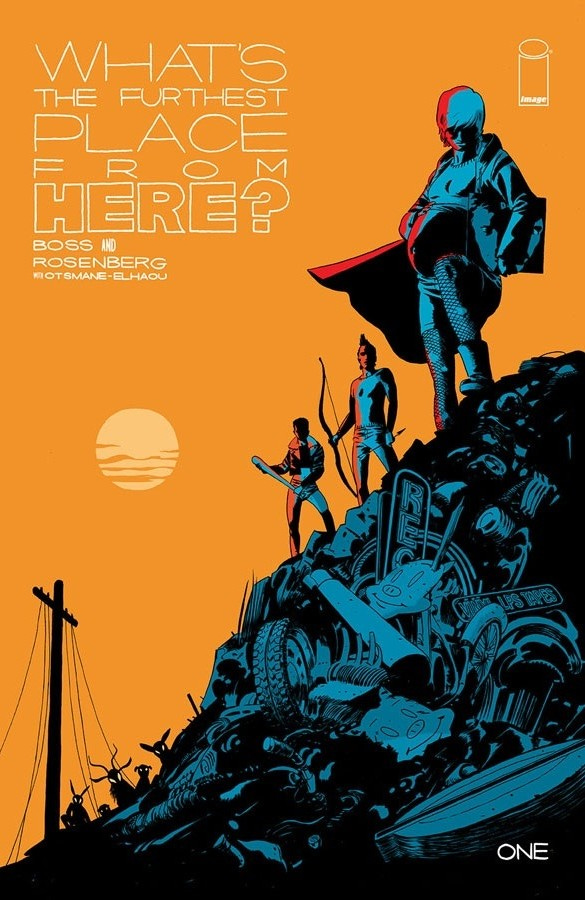
The world has ended, and all that remains are gangs of children living among the ruins of the Old World. Stuck in a dead world they know nothing about, governed by mysterious rules they don’t quite understand—except to never go out at night, or the creepy, gray-faced, and hooded figures known as The Strangers will get them—they only have each other, and the many Gods of their respective houses.

Sid is a young girl who lives with her friends in an old record store. They call their house The Academy. They worship the shiny sleeves around the strange black discs, their personal Gods, that they find amongst the rows and rows of shelves within The Academy. Otherwise, they just hang out, spending their days waiting for the Strangers to leave more food, or occasionally a new baby—who is meant to be a new member of The Academy—and sometimes fighting rival houses in the streets, like the greedy Banker Pigs, all the while, fully aware that at a certain age, they will disappear.
Still, Sid believes there must be something else out there, more to life than this. One night, she disappears into the wastelands to find a missing friend, and the rest of her gang ventures out, risking everything in order to bring them both home.
And so our story begins…
What’s the Furthest Place From Here is a strange post-apocalyptic coming-of-age story. It’s a horror story. It’s a sci-if tale. It’s an apocalyptic odyssey. It’s a story that evokes late nights smoking cloves and drinking coffee with your little found family in the corner booth at Denny’s, talking music and movies, except that it’s all set in a Mad Max/Solarbabies/Logan’s Run kind of setting. The book is a Mystery Box tale too, throwing readers directly into the deep end of an unfamiliar situation, much like the TV shows Lost or From, and not just with the wider world either, but when it comes to the kids’ weirdly labyrinthine little society amongs the ruins too, and all the while, the story leaves it up to the reader to keep up, keep track, and follow along.
Issue #16 finally reveals the big puzzle piece, giving the reader their first true glimpse of what’s actually happened, and is happening, to the world of this story. I won’t spoil it here, but rest assured, I loved it, and I’m really looking forward to the next issue.
This book is definitely worth checking out.
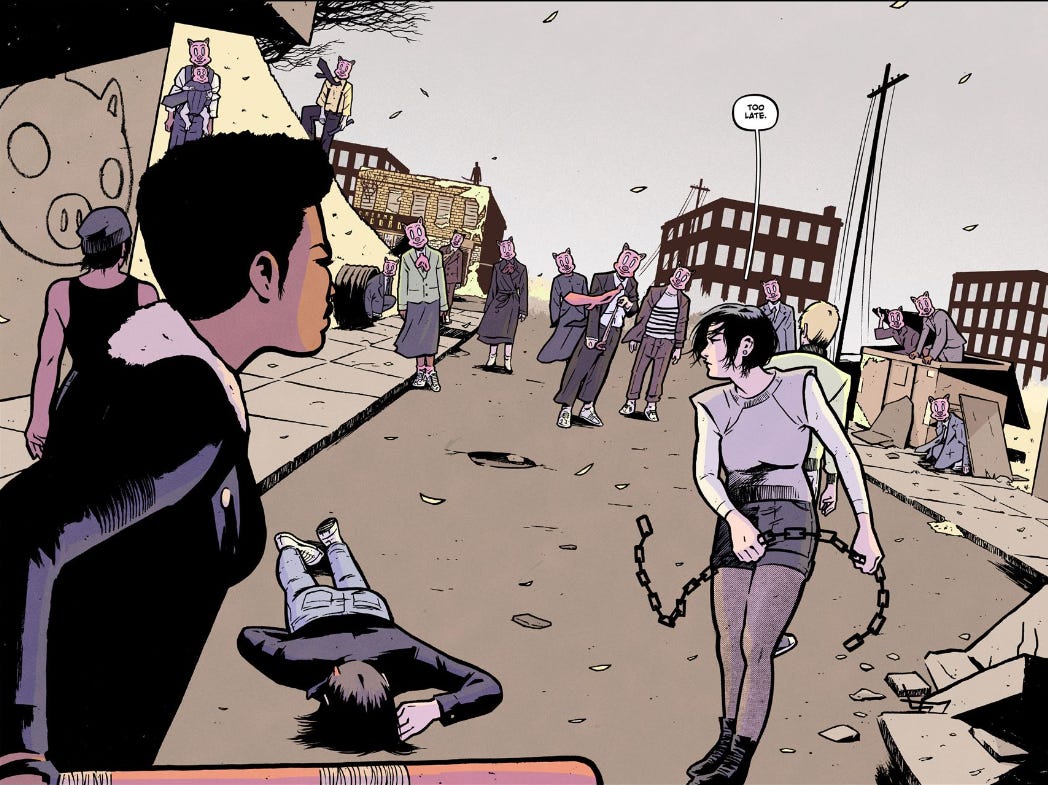
I’m Fine I’m Fine Just Understand
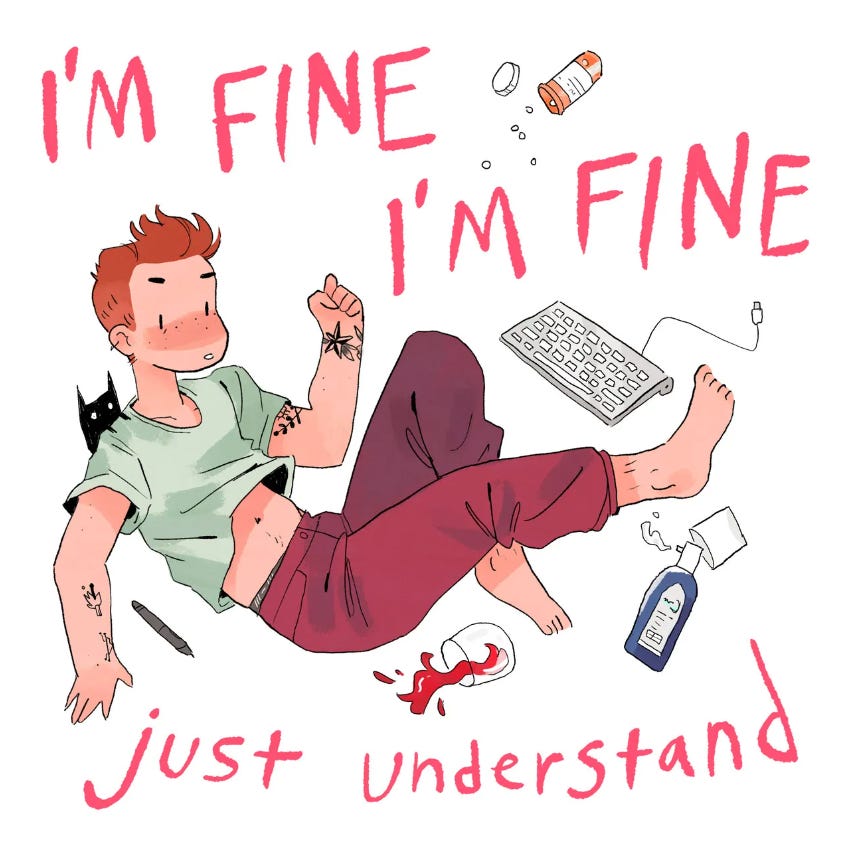
Nate Diana “Indy” Stevenson, known professionally as ND Stevenson, has been the creator, showrunner, and executive producer of the She-Ra cartoon, as well as a co-writer of the comic book Lumberjanes, and the writer and artist of the graphic novel Nimona, which was recently made into a really good animated movie.
I’m Fine I’m Fine Just Understand is his ongoing Substack, a diary of sorts, chronicling through regular short comics his emotional journey with gender, identity, transition, and body image, all while heavily peppered with the humor and struggles of everyday life.
It may seem little and quiet and off-the-cuff, but it is also cute and sweet and honest, and absolutely subscribing too. Their little comics are a fun little moment when they arrive in your inbox.
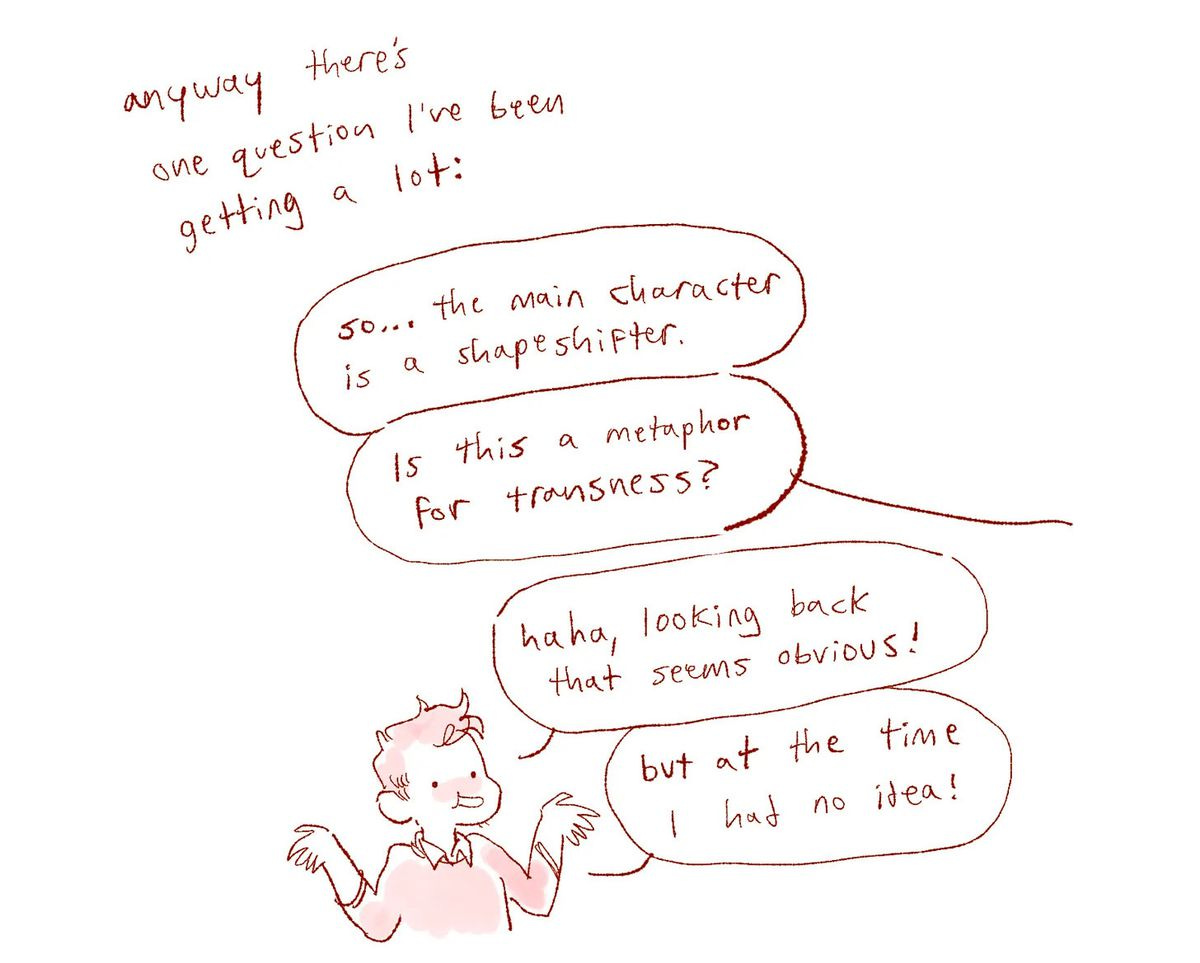
Do A Powerbomb!
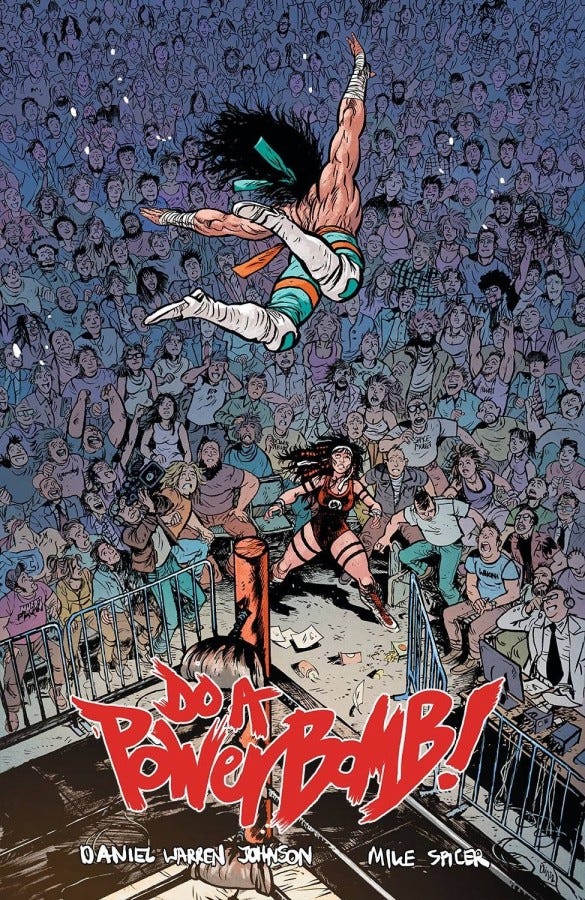
Lona Steelrose has always wanted to be a famous pro wrestler, but she's still living under her Mother’s shadow. Her Mom was the best to ever do it, until she died in the ring years ago when her opponent screwed up a big move.
So when a wrestling-obsessed necromancer and would-be Galactic conqueror named Willard Necroton appears and asks Lona to compete in the grandest, most dangerous, and very, very real pro wrestling tournament of all time, wrestling against the greatest wrestlers from across the cosmos, and promising to bring a loved one of the champion back to life as the first place prize, Lona teams up with the wrestler responsible for her mother’s death, the once-high-flying but now washed-up Cobrasun, hoping to get her mother back.
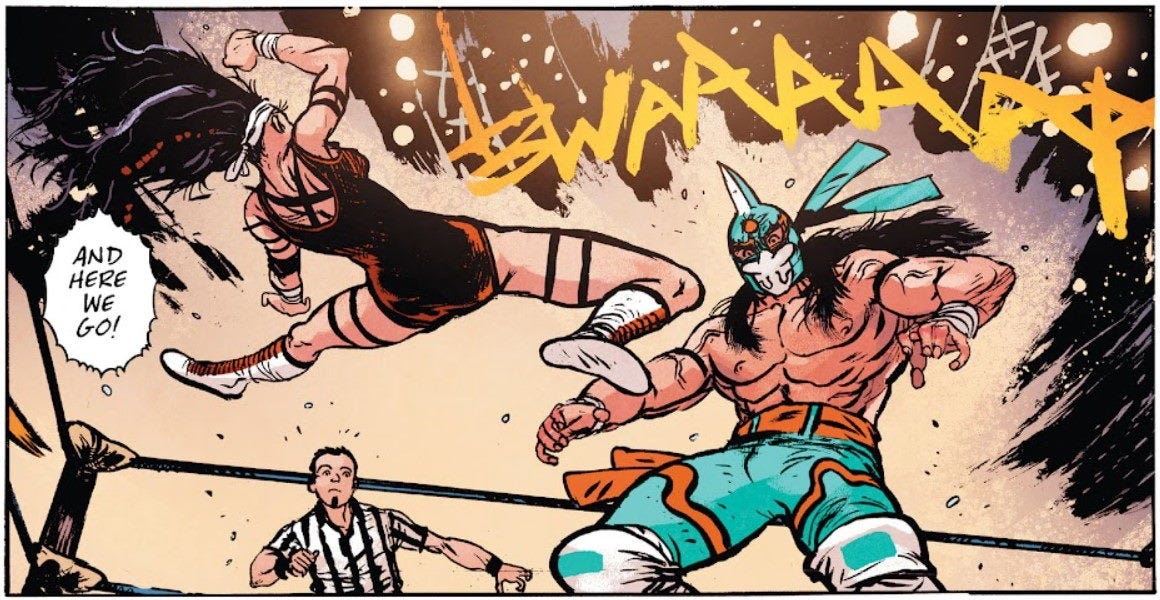
I’m not really a wrestling guy. I can enjoy it just like anyone else, but I pretty much dropped out after the Hulk Hogan Rock ‘n Wrestling era, mostly because, despite my obvious love of superheroes, pro wrestling was just never my thing. There was just too much “mullet” for me, if that makes any sense. This fact seems to shock some people, but it’s true, and this is why I avoided this book, regardless of how many times I would hear how great it was.
But… people just kept talking about it, and eventually I was worn down. There was just too much buzz. Written and drawn by Daniel Warren Johnson, who apparently wasn’t a wrestling fan either, at least not until the pandemic—which is something I understand, because the Our Town-esque era of pandemic pro wrestling, which took place in a practically empty and nearly silent stadium with only the wrestlers present, was maybe the greatest piece of 21st Century Pop Art that I’ve ever fucking seen—showed me that not only was the buzz about this book right, but undeniably…
It brings the thunder.
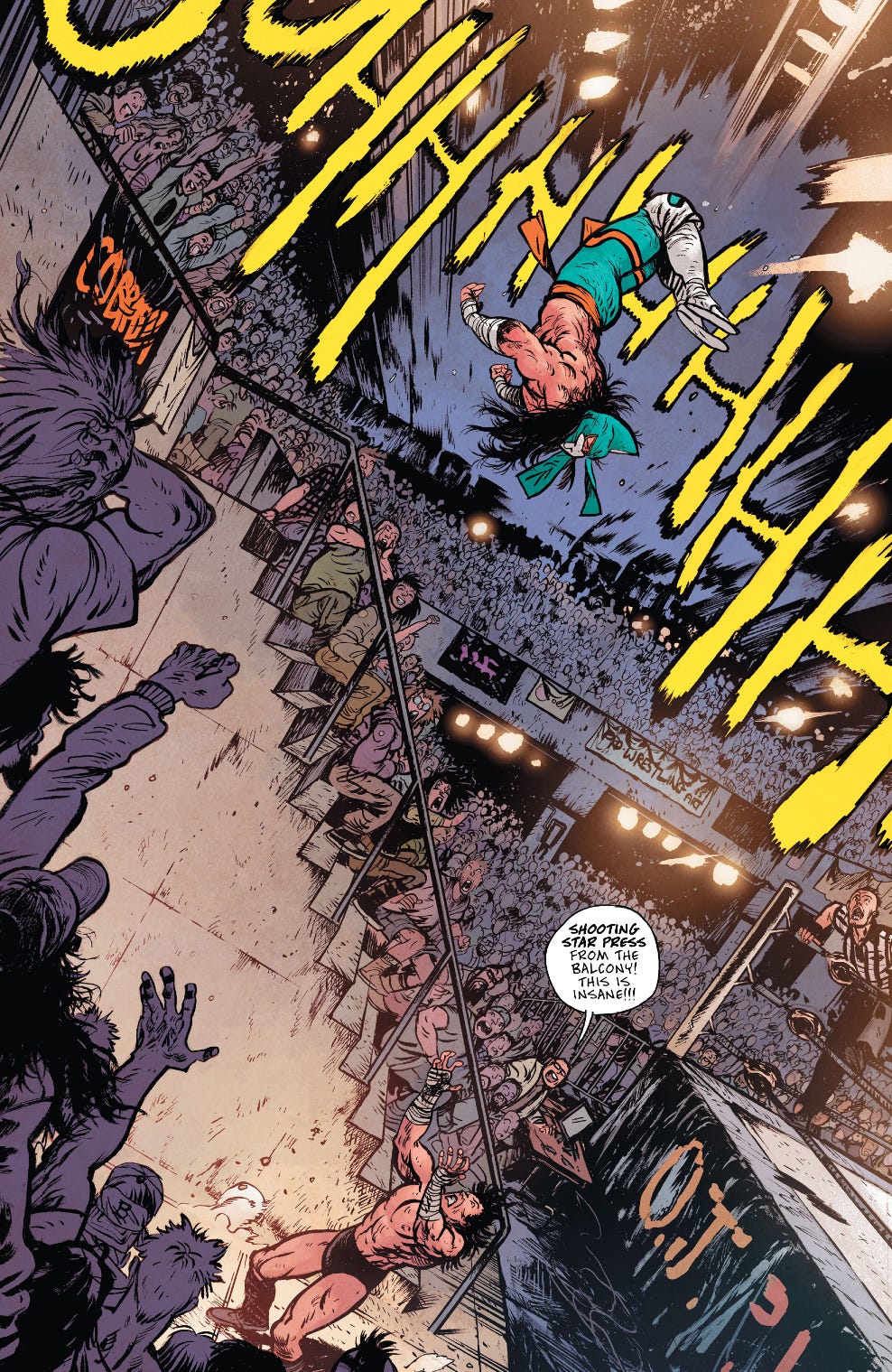
Wrestling is an inherently melodramatic medium, one that thrives on twists, betrayals, sudden saves, secret identities, team-ups, and long-held bitter rivalries, so it’s a perfect fit for the superhero serial style of comicbooks. Do A Powerbomb totally embraces all of this while exploring trauma, loss, sacrifice, grief and the repairing of estranged relationships. This might make it sound like an overly grim story, but isn’t, it’s a fantasy adventure in the ring, one that is incredibly entertaining, action-packed, and stuffed with wild designs and characters, and all done with Johnson’s kinetic art style, with brilliant colors by Mike Spicer, and the incredibly, and appropriately, in-your-face lettering by Rus Wooton. It’s very human, very fun, and very unexpected story, all done with a very obvious love of the big spectacle that is pro wrestling.
I mean… there’s an Orangutan Tag-team, both of whom are almost too awesome to not to be the main characters.

Johnson excels at visual story-telling. He is a master of nailing the best angles and with filling a page. It really is astounding work, and the fact that it’s an actually good story too only makes it more so. I wasn’t aware of his work really before this, but I am now, and his name is going on my list of writers who I will always check out whenever they have a new book.
A seven issue mini-series, Do A Powerbomb is all killer and no filler, as they say, and it will explain to all of those who don’t know, exactly why wrestling is so popular, and for those who already do, it will reinforce that love.
This might be my favorite book of the year.
Definitely pick this up.
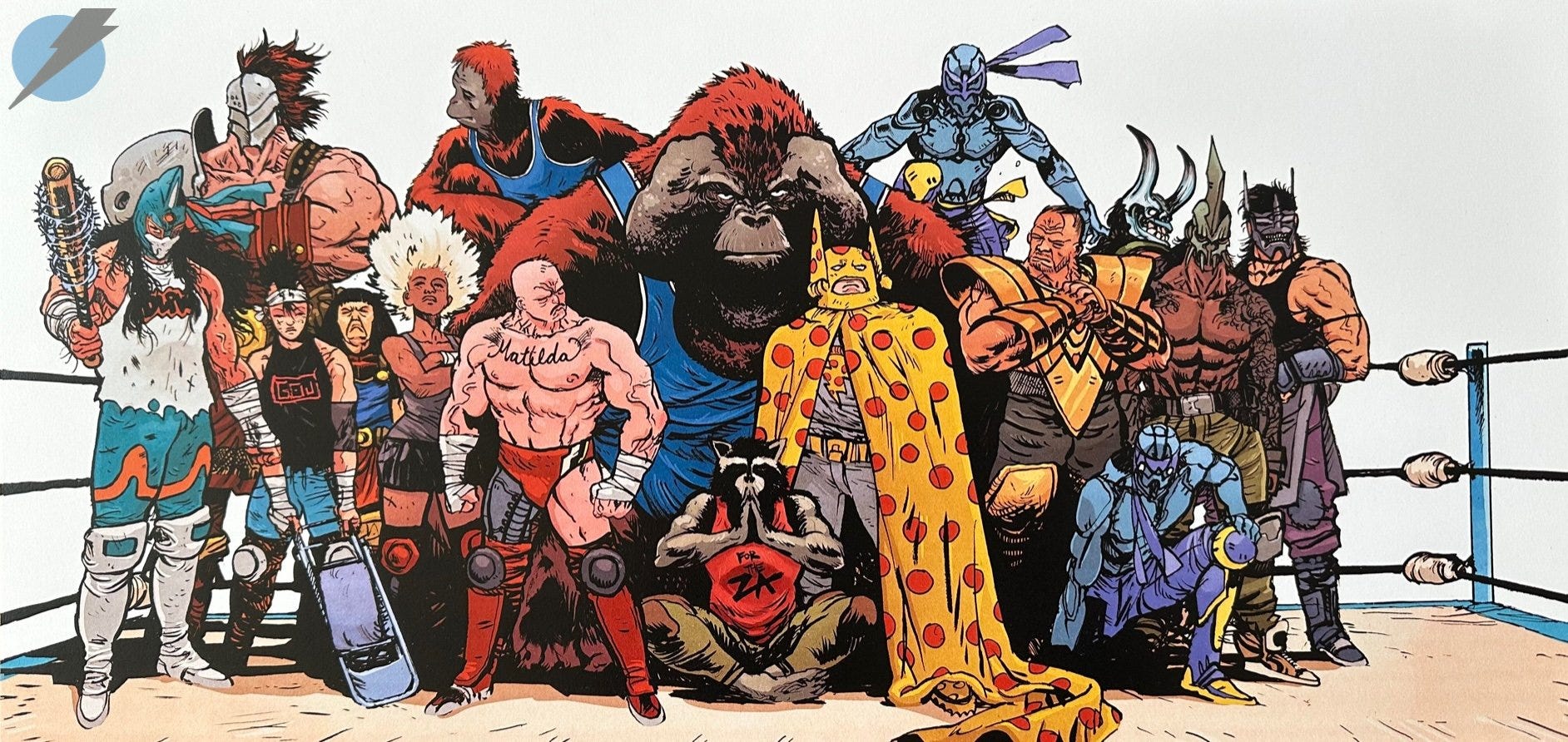
Ah…comics…
Special Mention to the on-going and still great: Something Is Killing The Children, Saga, and The Nice House On The Lake.

Something is Killing the Children is written James Tynion IV, with art by Werther Dell'Edera. It follows Erica Slaughter of the House of Slaughter, a chapter-house in the Order of St. George, a secret organization that kills monsters, especially the ones that hunt children, as she travels from town to town.
Saga is an epic space opera created by writer Brian K. Vaughan and artist Fiona Staples that follows Alana and Marko, two young lovers and awol soldiers from opposite sides of long-warring extraterrestrial races, on the run from the authorities from both sides of the galactic war, as they try to raise their mixed-race newborn daughter, Hazel, who occasionally narrates the series.
The Nice House by the Lake is written by James Tynion IV and drawn by Álvaro Martínez Bueno and tells the story of a man named Walter. Walter has always seemed a little strange, but when he invites ten of his closest friends to a week-long getaway at a secluded house on a lake, a house that somehow remains untouched as the rest of the world ends in fire outside the lake’s boundaries, those friends discover just how truly different Walter is.
All three of these books have been going on for awhile now, they started out great, and they have continued to be great. There’s lots of collected editions out there for each one too, so it’s not too hard to catch up, which I definitely recommend you do.
Best mini-series: Giant Robot Hellboy
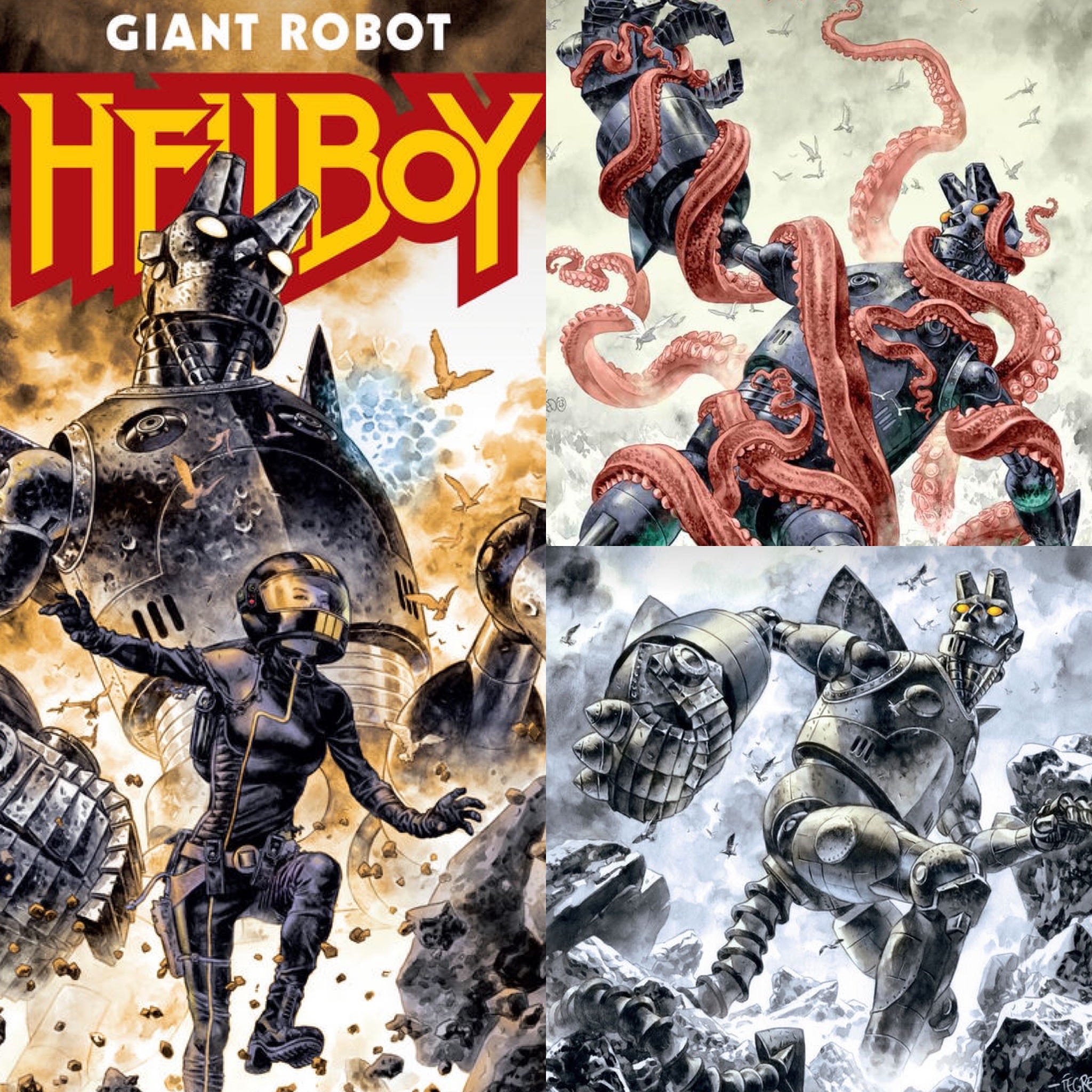
Based off sketches that Hellboy creator Mike Mignola considered “too silly” until COVID-19 left him with extra time on his hands, Giant Robot Hellboy tells the story of Demonspawn, Monster Hunter, and Future King of Hell fated to destroy the world, Hellboy, having faced Lovecraftian monsters and pulp-era villains, and almost every supernatural being found in folklore, fiction, and cryptozoological fields in between, facing the only real terrors left for him to fight… kaiju…
Although, it should be said… Hellboy hasn’t face the Predator yet either… but that’s for another day. Hopefully.
Anyway, Hellboy has been kidnapped by a secret organization and hooked up to a massive mecha-Hellboy so that he can provide cover for an operative on a mission to a mysterious island full of giant monsters. As per usual with Hellboy, it’s a pulpy good time, and absolutely worth checking out.
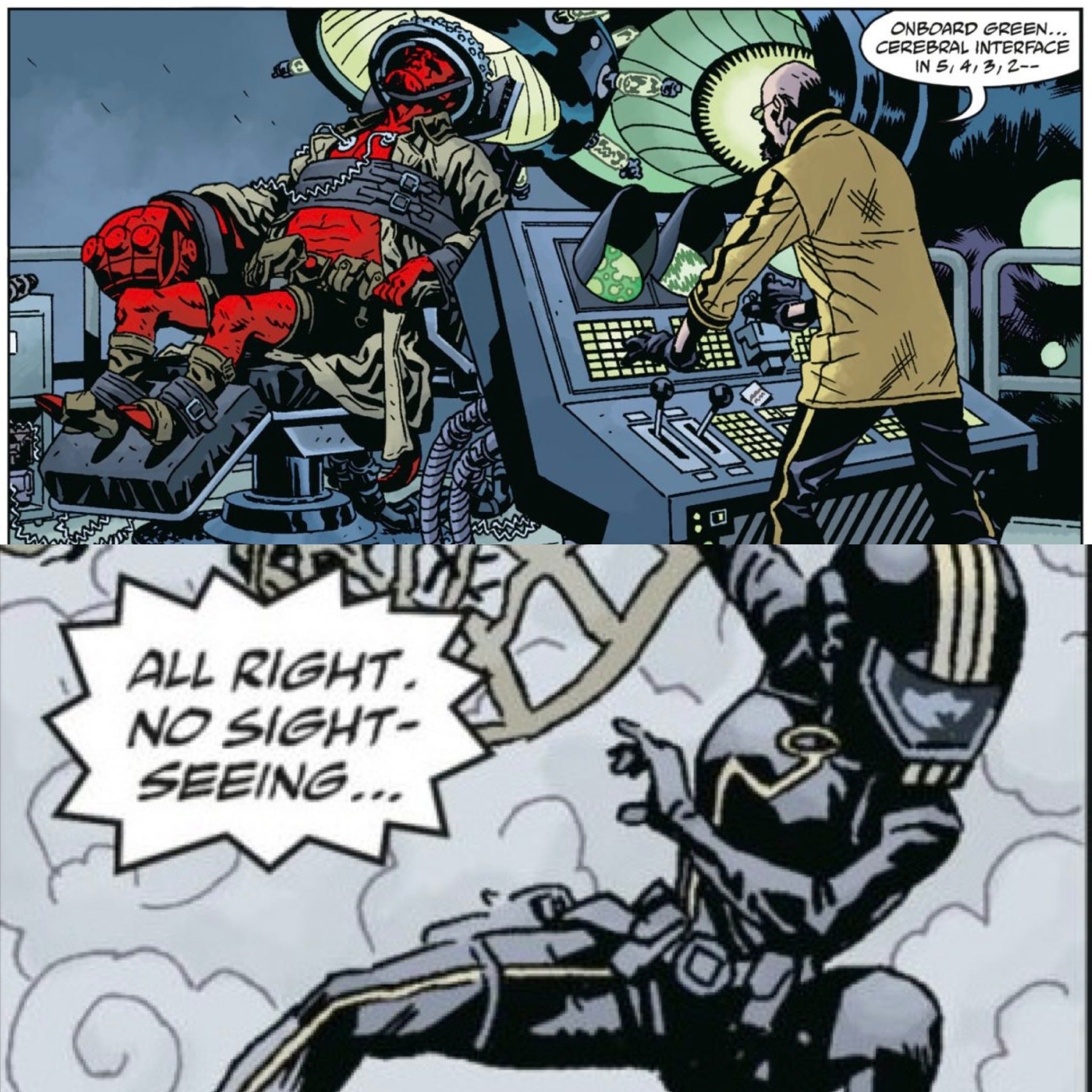
Comics to watch: Transformers, G.O.D.S., Rare Flavours
Three new comics…

As I stated above, Daniel Warren Johnson is now a writer who I pay attention, so when I heard that he was going to do a relaunch of the classic Generation One era of Transformers, a book that was intended to cross-over with a relaunch of G.I. Joe too,… I was interested, and so far, it’s fantastic.
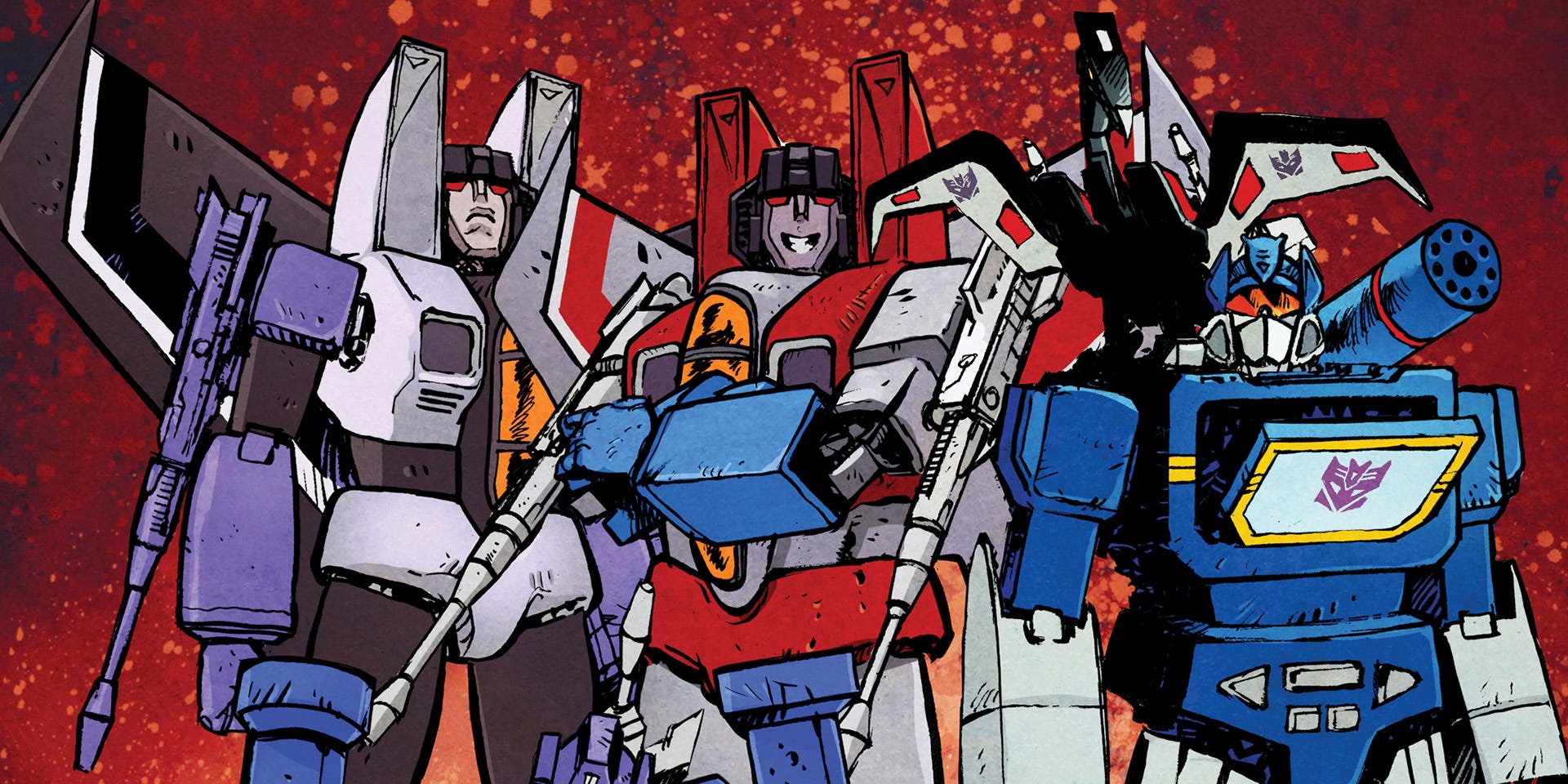
G.O.D.S. is another relaunch/reboot/reimagining by Jonathan Hickman, this time focusing on the intersection of science and magic in the Marvel Universe, and while this one doesn’t seem as tightly constructed as his X-Men reboot, and focuses on a lot more brand new characters than it does already established ones, I am interested in seeing where this strange and mysterious new world goes.
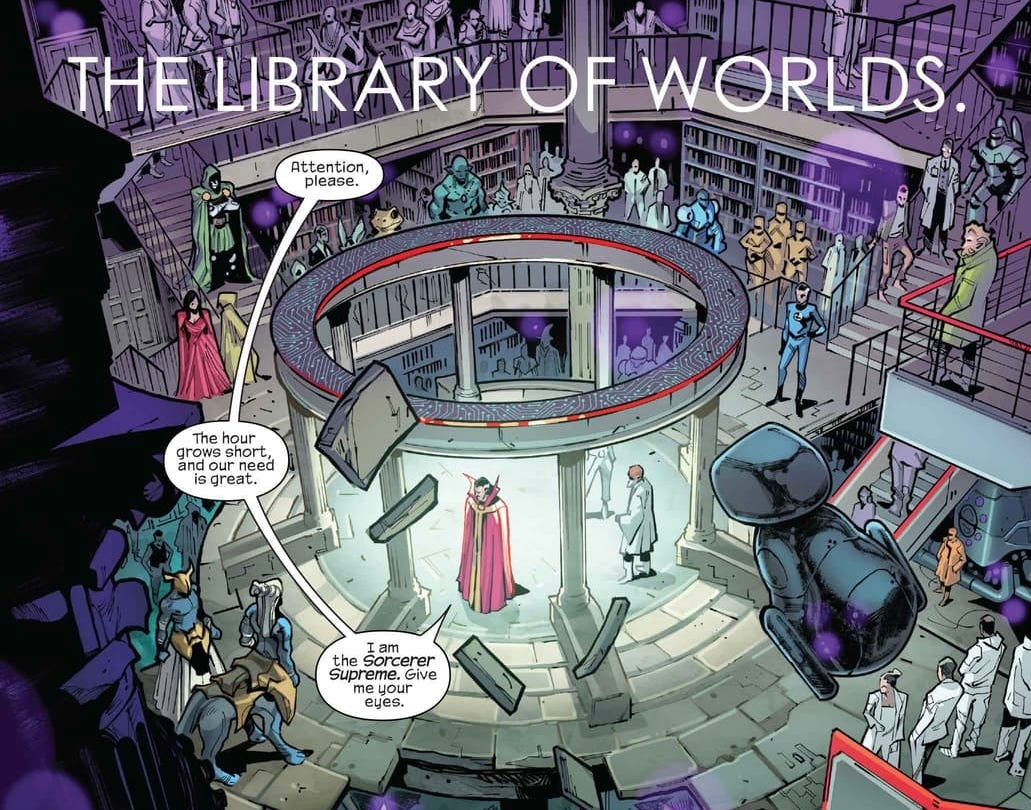
The Many Deaths of Laila Starr was one of my favorite books from a couple of years ago, so when writer Ram V and artist Filipe Andrade reunited for Rare Flavours, I was in. Telling the story of the gourmand Rubin Baksh, who is actually Bakasura, a demon who long ago terrorized the land by eating everything and everyone who crossed his path, at least until the mighty Bhima broke his back. Now healed from those injuries, the news of Anthony Bourdain’s death has brought Rubin back to Earth, and he is determined to gain similar fame and fortune, becoming the new Bourdain, by making a documentary of the best Indian restaurants in the world, and he intends to do this with the help of a discouraged young filmmaker named Mo. But what will happen once the documentary is finished? And who are the dangerous strangers following him? And what do they want? Rare Flavours is a love letter to Indian cuisine, all while being smart and relatable, sinister and intriguing, and also weirdly alien all at once.

I’m really enjoying all three of these, and I’m looking forward to reading more.
Last but not least… Comics with dubious potential: The Outsiders
Planetary is one of my most favorite comic books ever.
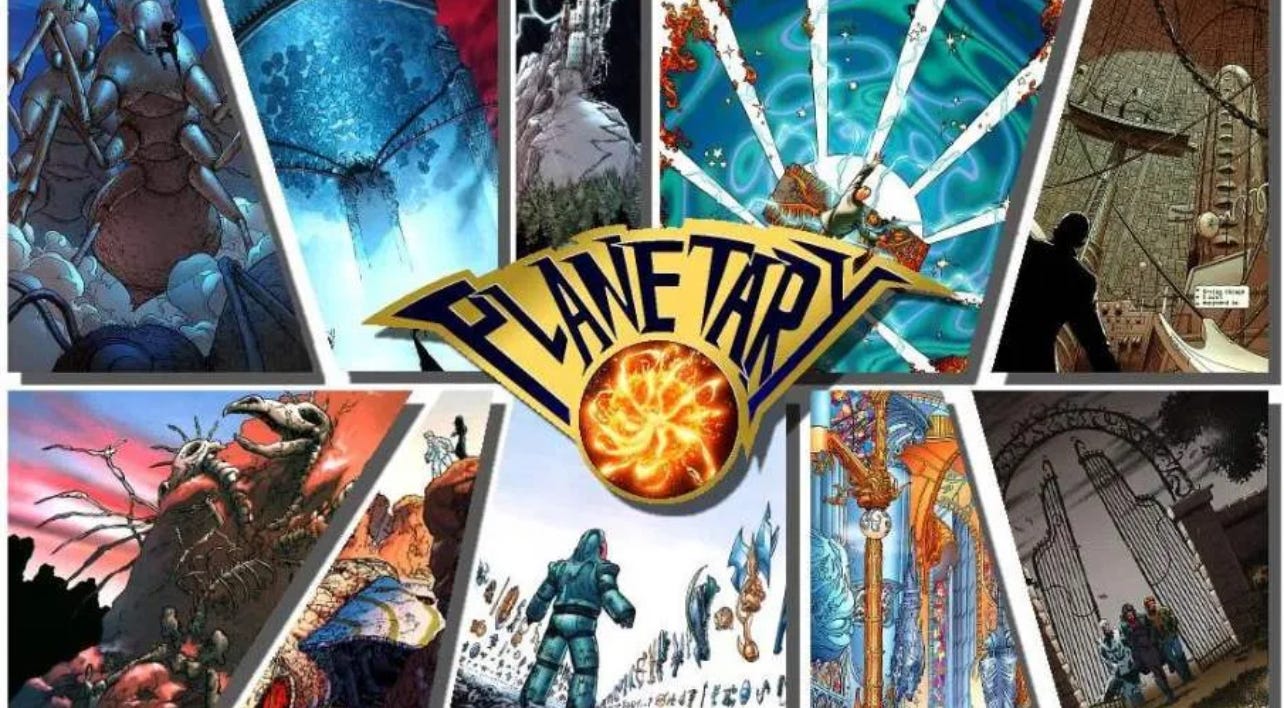
Running from 1999 to 2009, but only managing to make 27 issues—which is just how it goes sometimes in comics—it tells the story of an organization known as Planetary, which discovers and chronicles the secret history of the world, chasing superhuman, supernatural, extraterrestrial, and just plain unexplainable secrets across the face of the planet.
Funded by the mysterious Fourth Man, the field team consists of three superhuman beings: the super-strong Jakita Wagner, the information specialist known as The Drummer, and a 100 year old man called Elijah Snow, who can create intense cold.
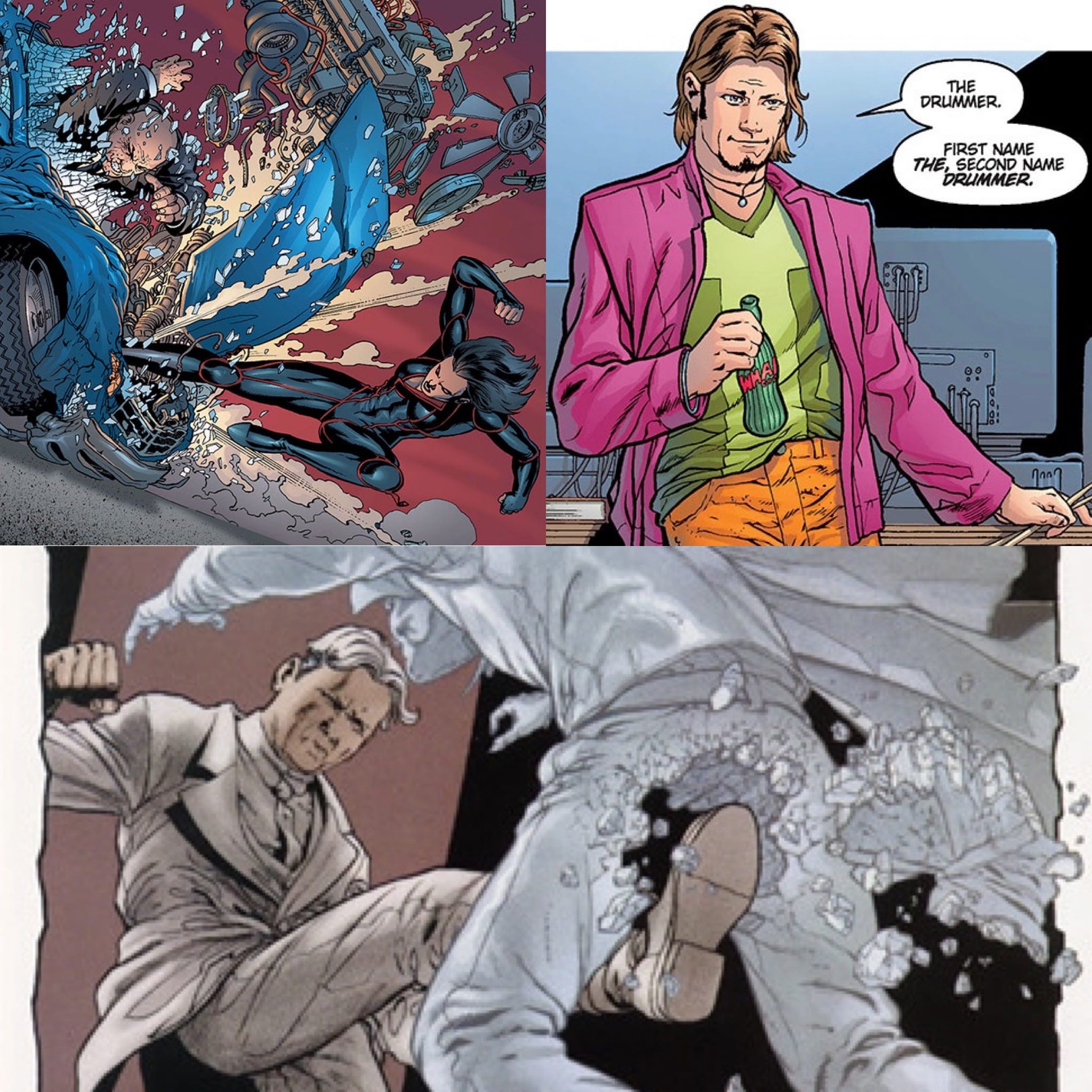
Described as "Archaeologists of the Impossible,” they record the strange phenomena they find in their annually published “Planetary Guides.” They observe, they record, and they preserve—or contain, if the situation is dangerous—all in an effort to “keep the world strange.”
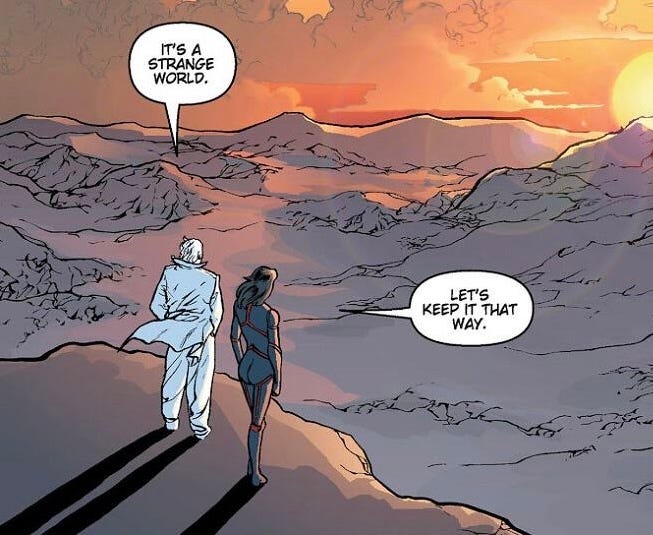
They are opposed along the way by a rival group of metahumans called the Four, based on Marvel's Fantastic Four, who are the secret Kings of the World, and are using all of these secrets for their own personal gain.
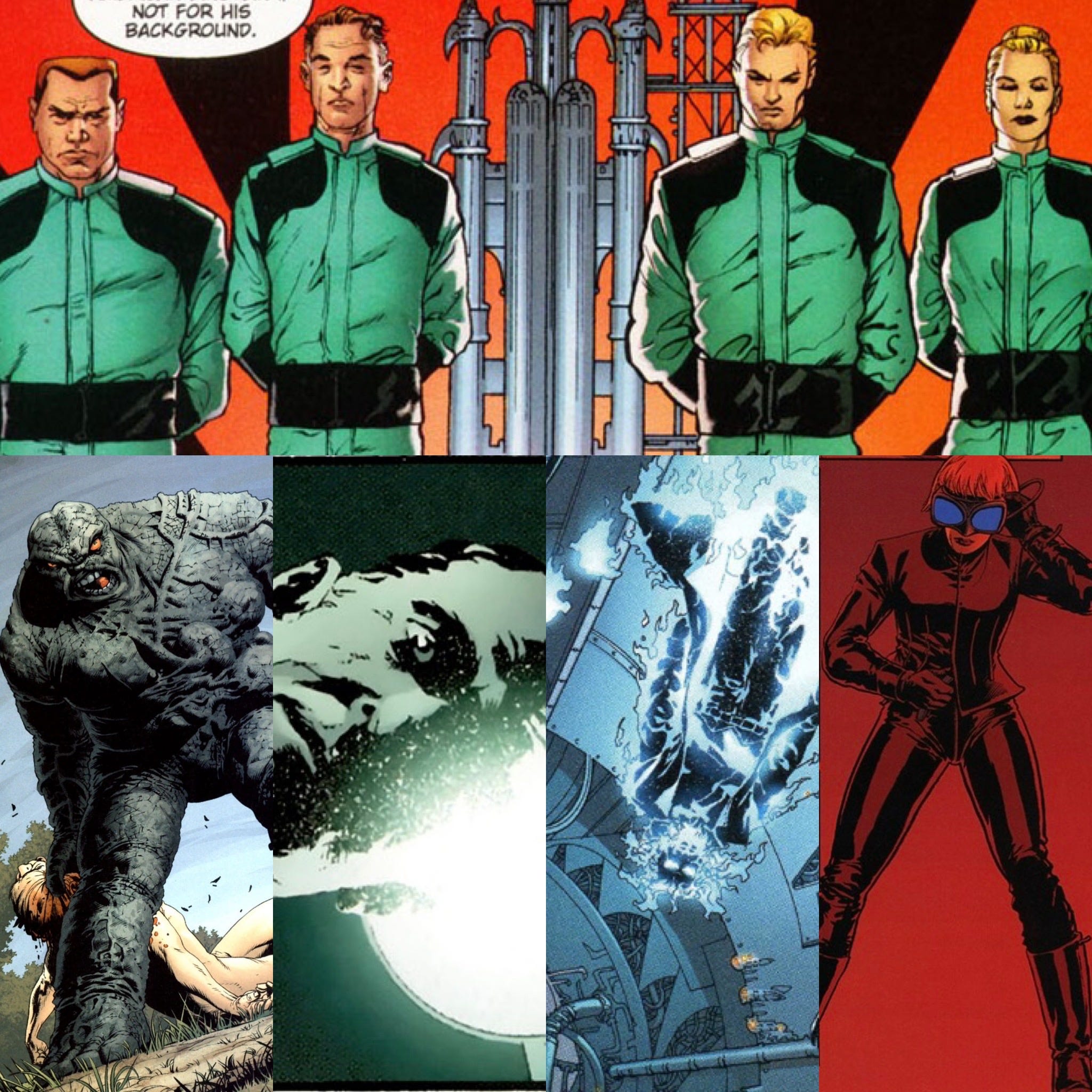
The story is great, and lots of fun, but the book is also a tour of the history of pop culture and heroic fiction, as the myriad monsters, superhumans, aliens, mystical mysteries, unusual relics, and dark Cold War secrets they encounter are all references to well-known superhero, pulp, sci-if, and fantasy characters, events, and stories.

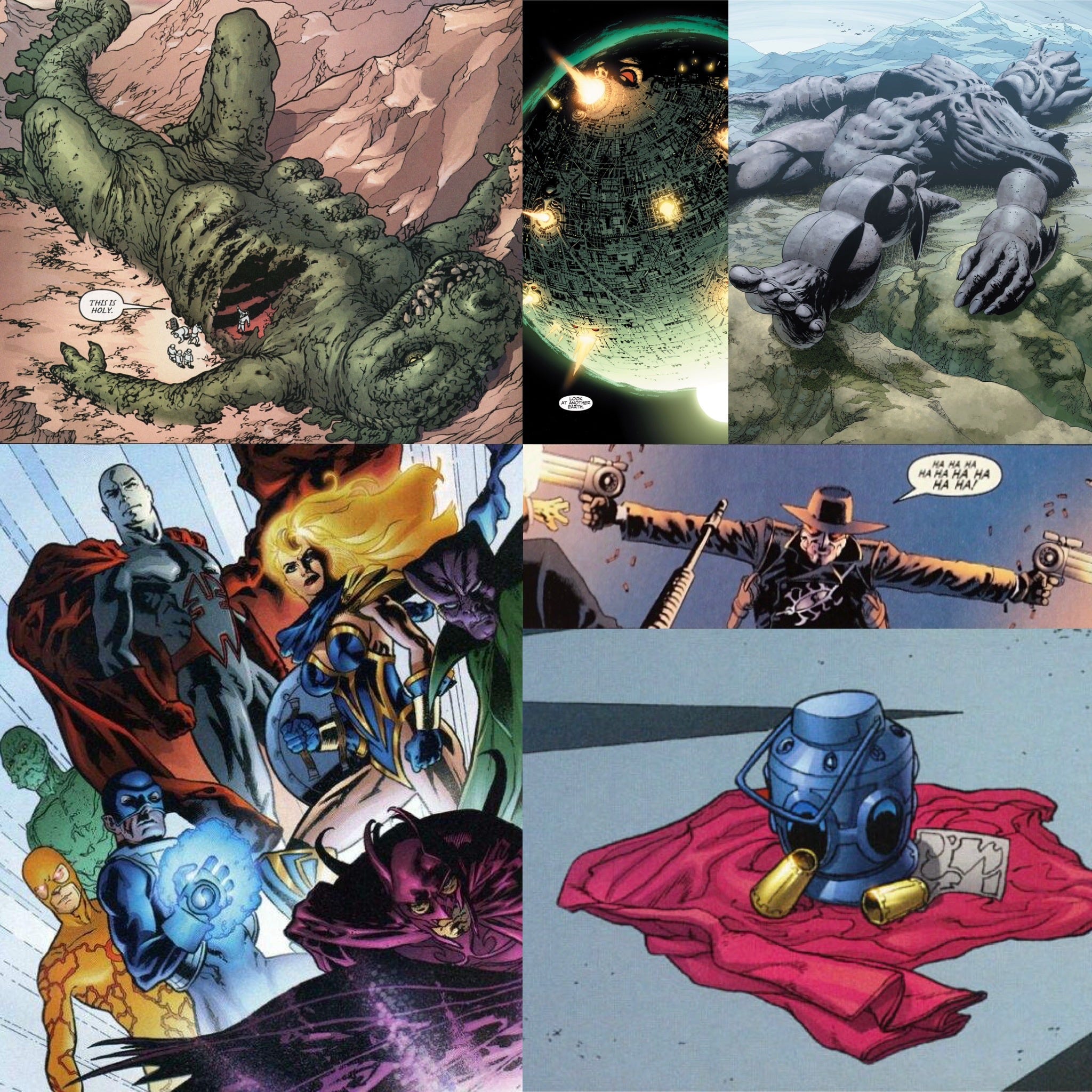
I loved it, and it has obviously been influencial on my own work.
Planetary was originally published by the Wildstorm imprint of Image comics, and a few Multiversal jaunts notwithstanding, it mostly concerned itself with the Wildstorm characters and continuity. Wildstorm was one of the original seven comicbook houses under the banner of Image comics, each one of these houses being the personal studio of each of the original seven founders of the company, famous artists who left the Big Two comic book companies to create a studio based on Creator’s Rights.
Wildstorm was led by the famous comicbook artist Jim Lee, and it was one of the more successful houses, so much so that a decade or two back, DC Comics backed a dumptruck full of money onto Jim Lee’s lawn and bought the whole thing. In the years since, DC has been working on integrating all the Wildstorm characters into their main universe, all to varying degrees of success.
So, when DC announced that the latest interation of its long-running title The Outsiders was intended to link somehow to the world, characters, and stories of the Planetary comic book…
I was intrigued.

In this new version, Luke Fox used to be known as Batwing, a kind of armored Batman with metal wings, and Kate Kane is Batwoman, a Gotham DA who took to the rooftops when justice in the courtroom failed. They’re two members of the large and sprawling Bat-family that I’m not all that familiar with, mostly because I don’t read regular continuity Bat-titles. The idea is that Luke is a disillusioned hero who has decided to put his fortune to better use than beating up murder clowns in dark alleys. Does that mean funding exisiting Non-profit outreach programs? Building Social Safety Net Infrastructure? Direct Action support?
No, you big dummy, it means, delving deep into the secret history of the DC Universe, to plumb the depths of forgotten secret socities and heroes of unknown legends, to explore ancient evils in hidden tombs and forgotten tragedies in unseen places, all the result of a century’s worth of magic-and-mad-science fueled superheroics. It means “shining a light into the world’s darkest corners.”
So Luke Fox is putting together a team, and Kate Kane is his second recruit.
His first recruit is a woman called The Drummer. And being that she is older, something that has been mentioned more than a couple of times in the only two issues that have been published so far, and the fact that, as a stinger at the end of the 1st issue, she is seen with a copy of the Planetary Guide…
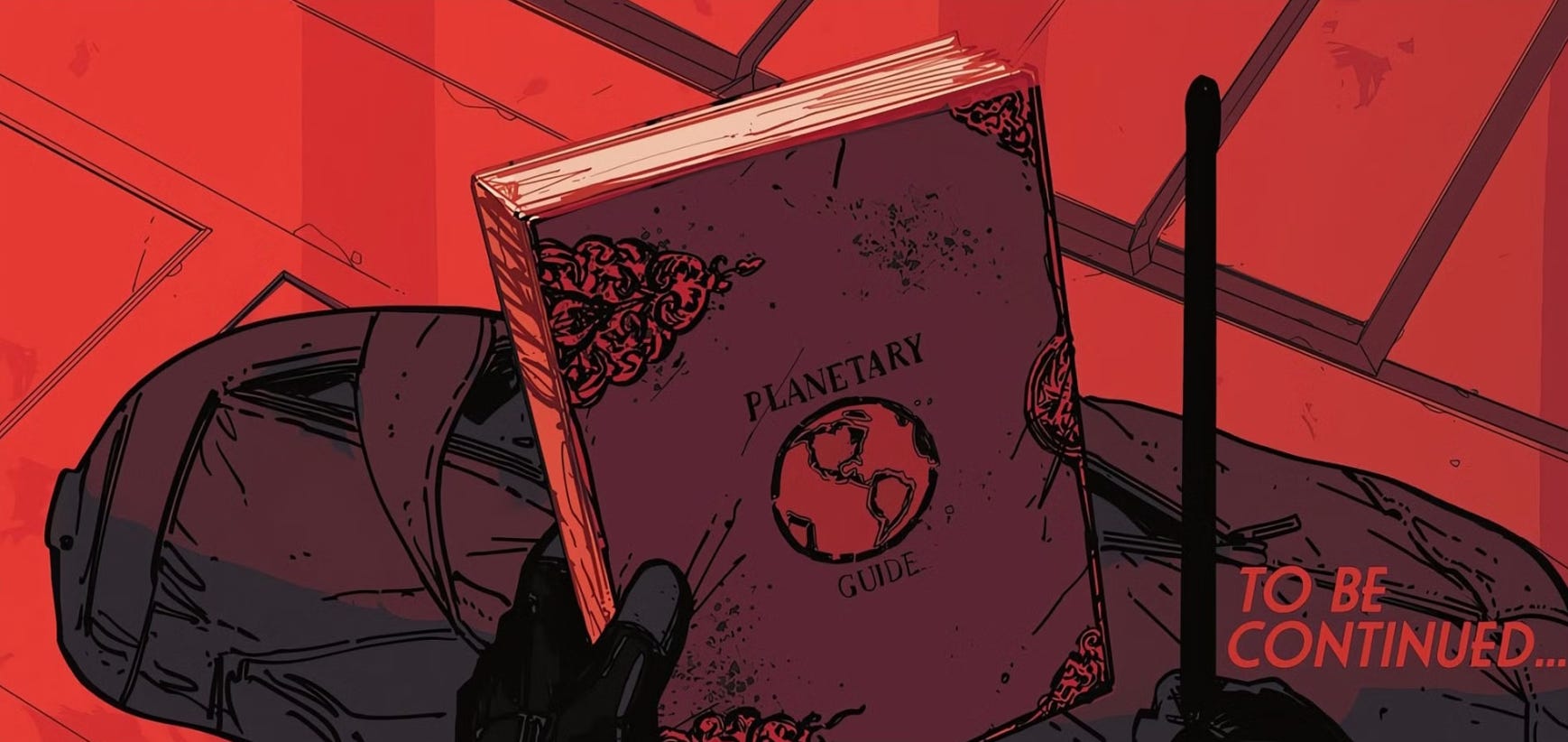
I’m betting her real name is Jakita Wagner, or she’s the daughter of Jakita Wagner and Ambrose Chase.
We shall see…
So, this book will definitely connect directly to Planetary somehow, instead of just doing a cheap knock-off version, which I like, but will it measure up to the legacy? Will it be able to stand out from under Planetary’s long shadow?
Honestly, right now I’m doubtful. The first two issues have been kind of wobbly, but… to be fair, it has only just started. This wobbliness may just be the story finding its legs. Maybe. The basis of the little one-shot adventures that each book has featured so far didn’t exactly wow me, so… I’ve got some doubts. We’ll see. For now, I’ll pick up the next few issues and see where it goes.
Fingers crossed, little comic book.

So, that’s it.
This was a long post, I know, but these are the books that I’ve loved this year, and a few that I’m keeping an eye on, and they all deserved their space. I hope my efforts here, meager though they may be, might lead to you checking some of them out.
Anyway, read some comics, you never know what you’ll find…

